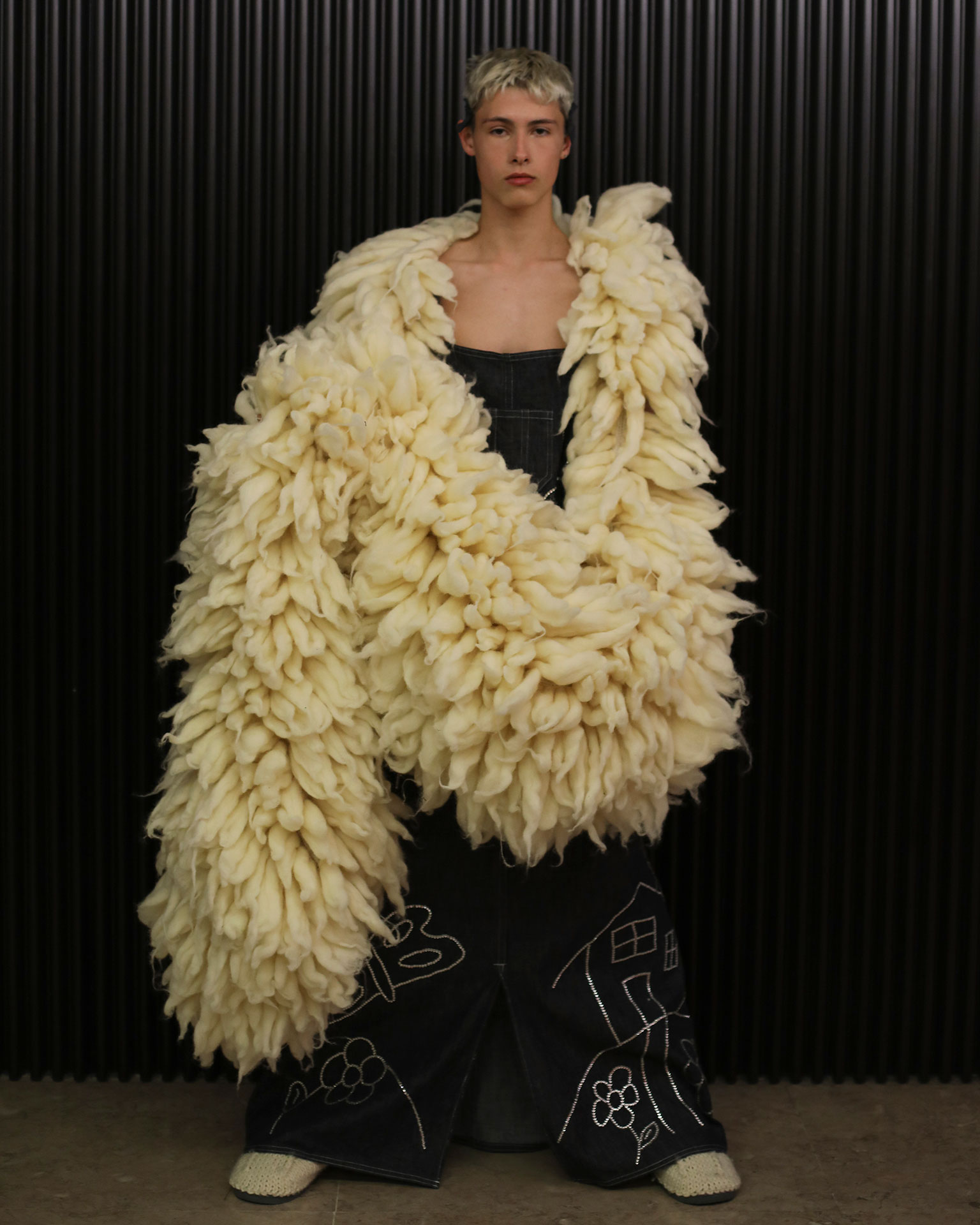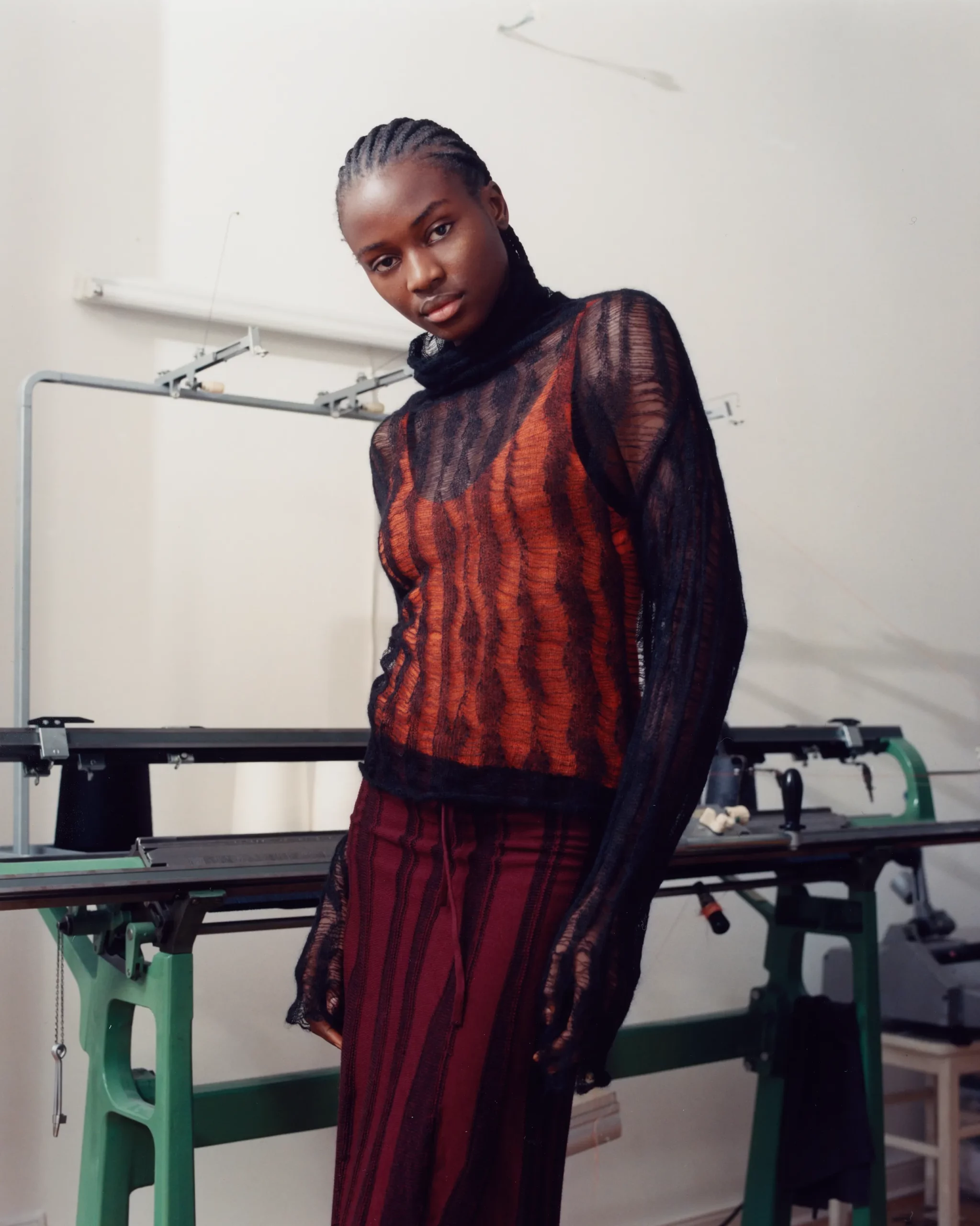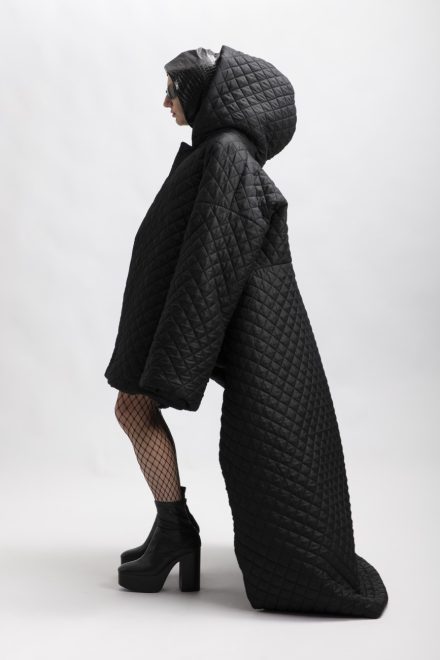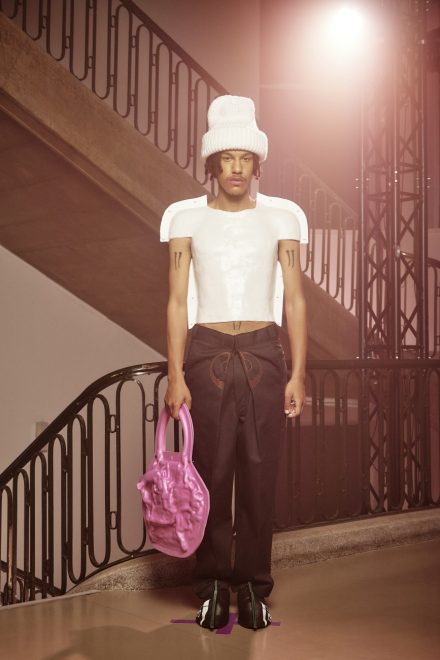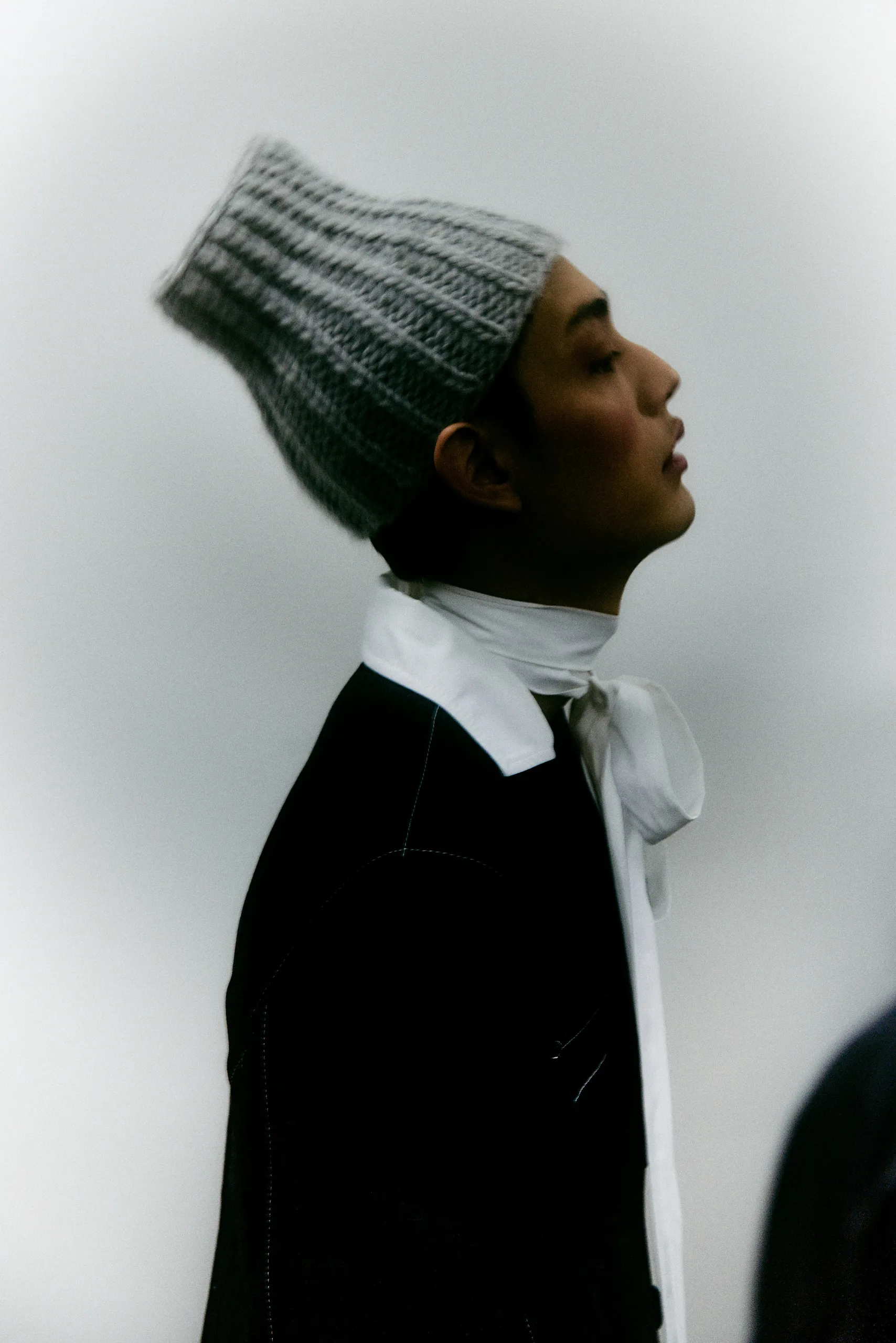There was a tangible thread amongst the most exciting emerging designers at Lisbon Fashion Week FW24/25. Many had brought their first or second attempts at garments produced using AI tools or made from novel materials. Others commented on our changing world by referencing dystopia, cultural preservation, or hope.
Three runways in the ‘Support Ukrainian Fashion’ initiative – where Ukrainian designers show their collections in safer cities abroad while Kiev fashion week is on hold – was a reminder that the fashion community is also political. And the number of underground names was high: alongside ModaLisboa’s usual Sangue Novo (New Blood) initiative for new Portugues names, was a graduate showing from Italy’s Istituto Europeo di Design (IED).
It all added up to a mood of activism – and not least because the event coincided with Portugal’s contentious snap general election. Bringing together so many young designers, educators and industry experts, this season of ModaLisboa was a springboard for unusual collabs and new talent.
Here are some of Lisbon’s best young designers who are pushing fashion boundaries.
MESTRE STUDIO by DIOGO MESTRE
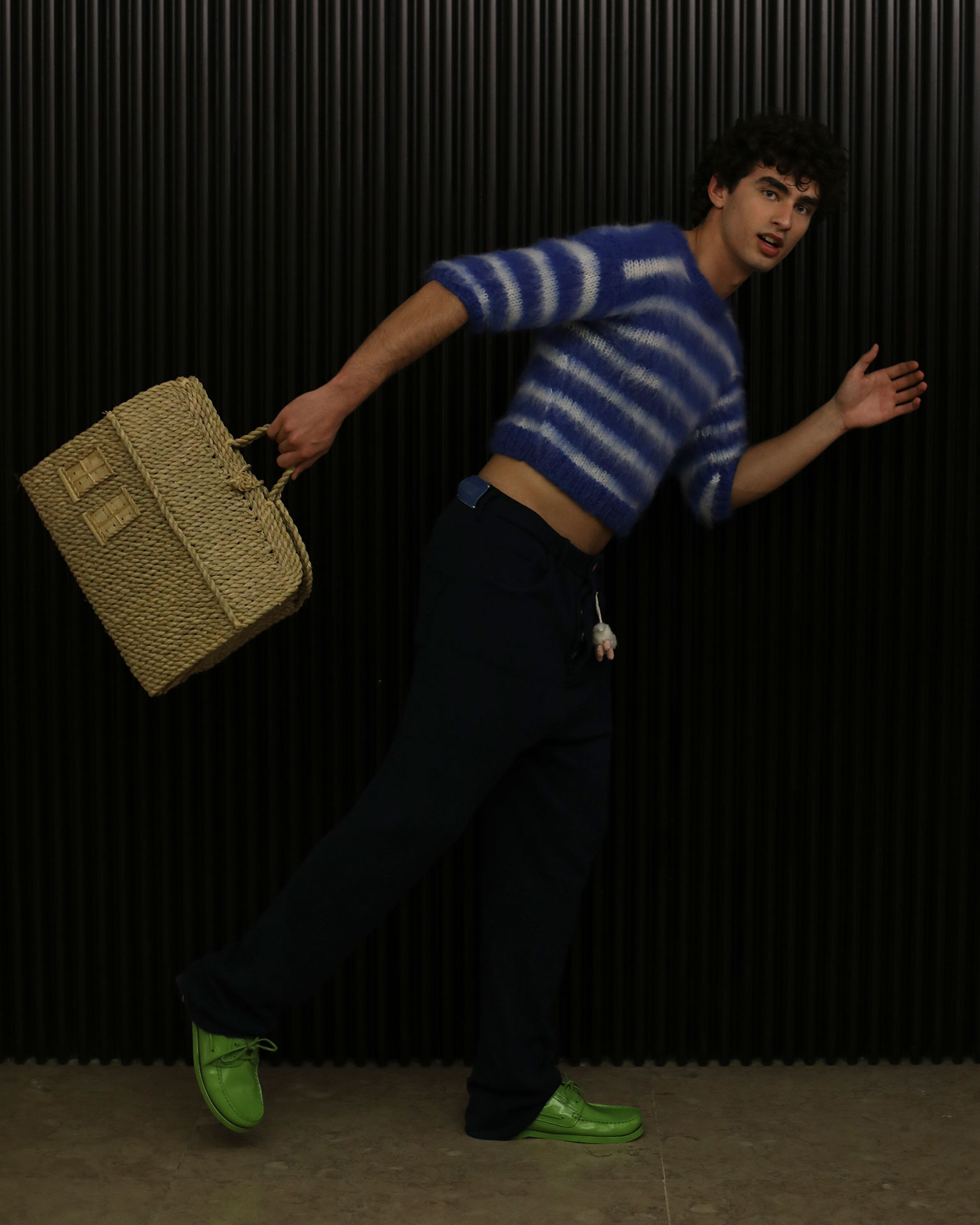
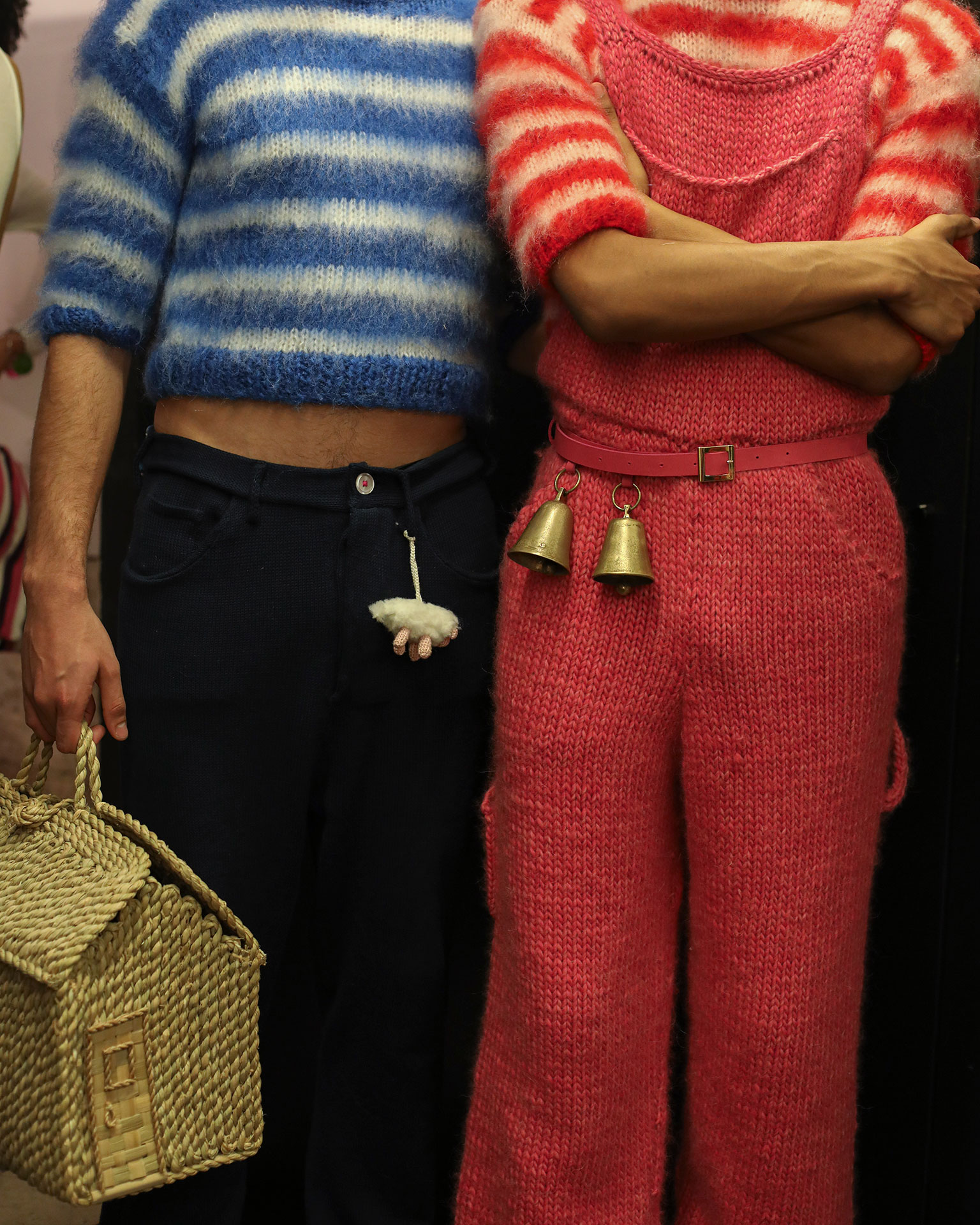
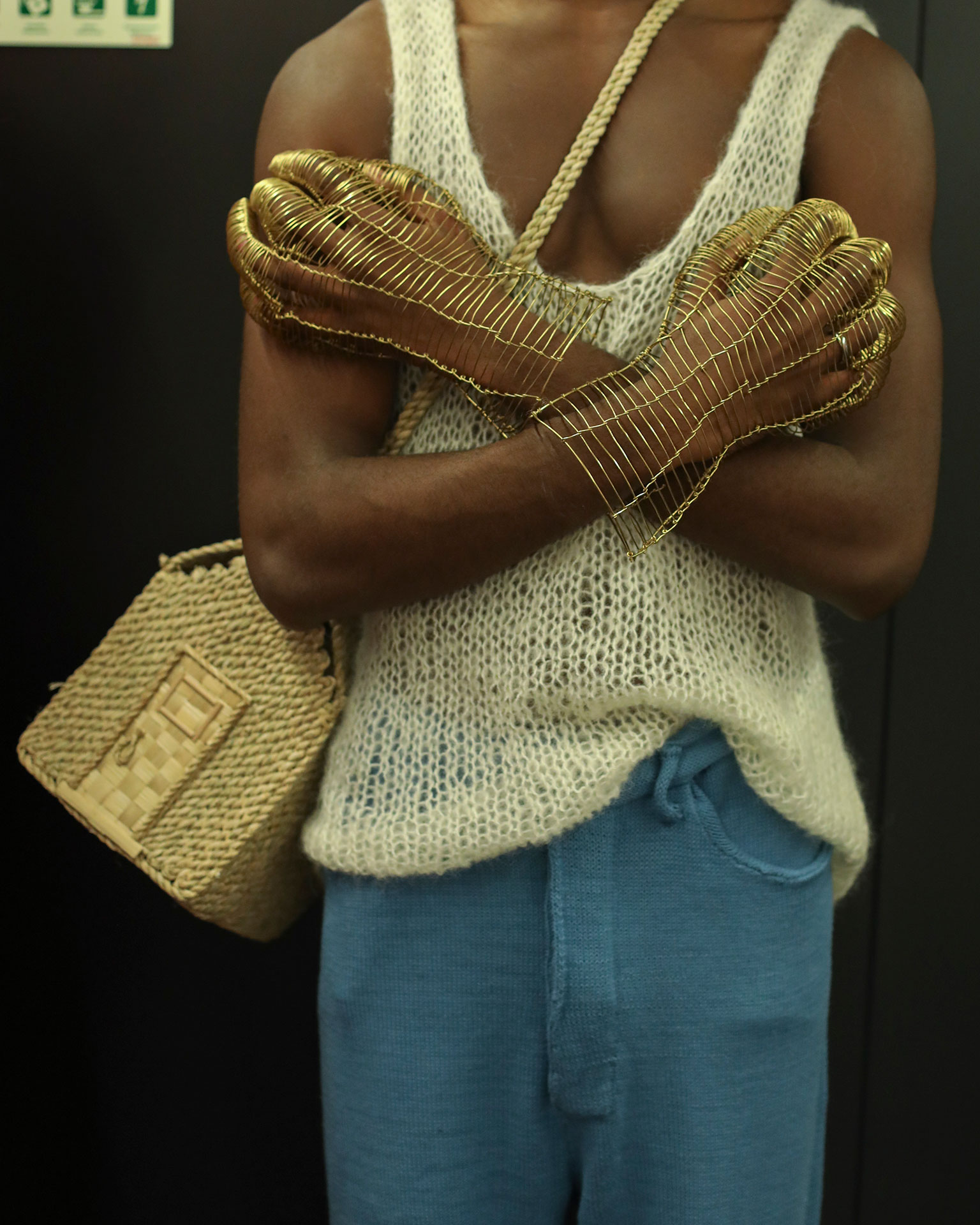
Fine arts and fashion design student Diogo Mestre brought pastoral nostalgia to his debut runway with I FELT AS SOON AS I ARRIVED (…) – a collection based on childhood memories and archive family photographs.
“I worked with a mood board of photos from my own childhood, and I took inspiration from the attire: the overalls, the patterns, textures, colours,” said Mestre. “I grew up in the country, so the bells on the belts recreate the sounds of the sheep herds. It’s all about the senses. I really love the smell of the wool, these woven bags – it smells like home for me.”
Everything under the Mestre Studio label is crafted slowly and by hand. “I want to focus on manual approaches. My time working with sculpture gave me an interest in hands, textures and forms. That’s why I’m obsessed with knitting,” he continued.
“All the knitted overalls are 100 percent wool. Some of the pants are an acrylic blend. I only want to work with good materials; it’s all about emotion and thinking ‘I want to keep this’. I don’t want to mass produce. I want to keep it slow.
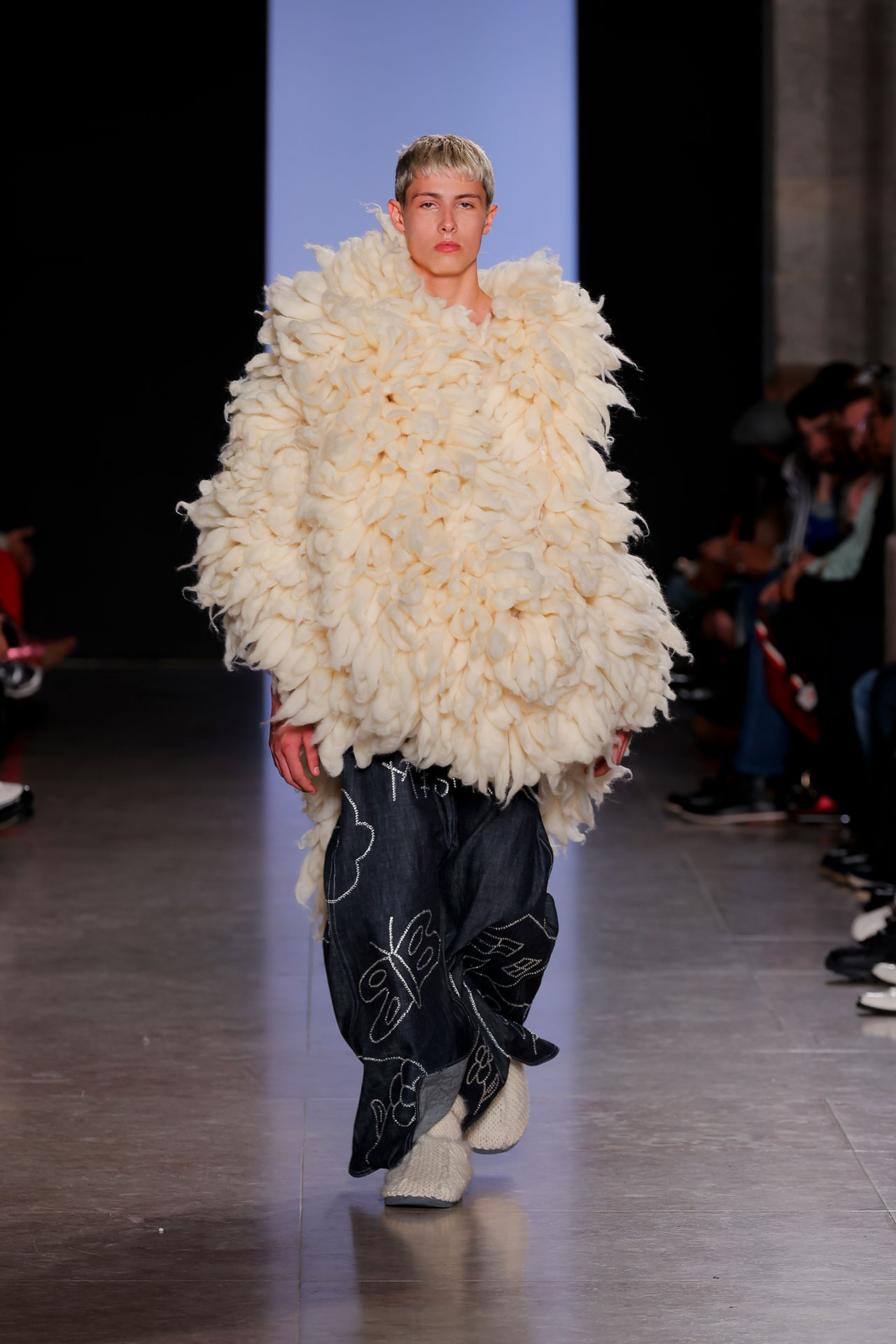
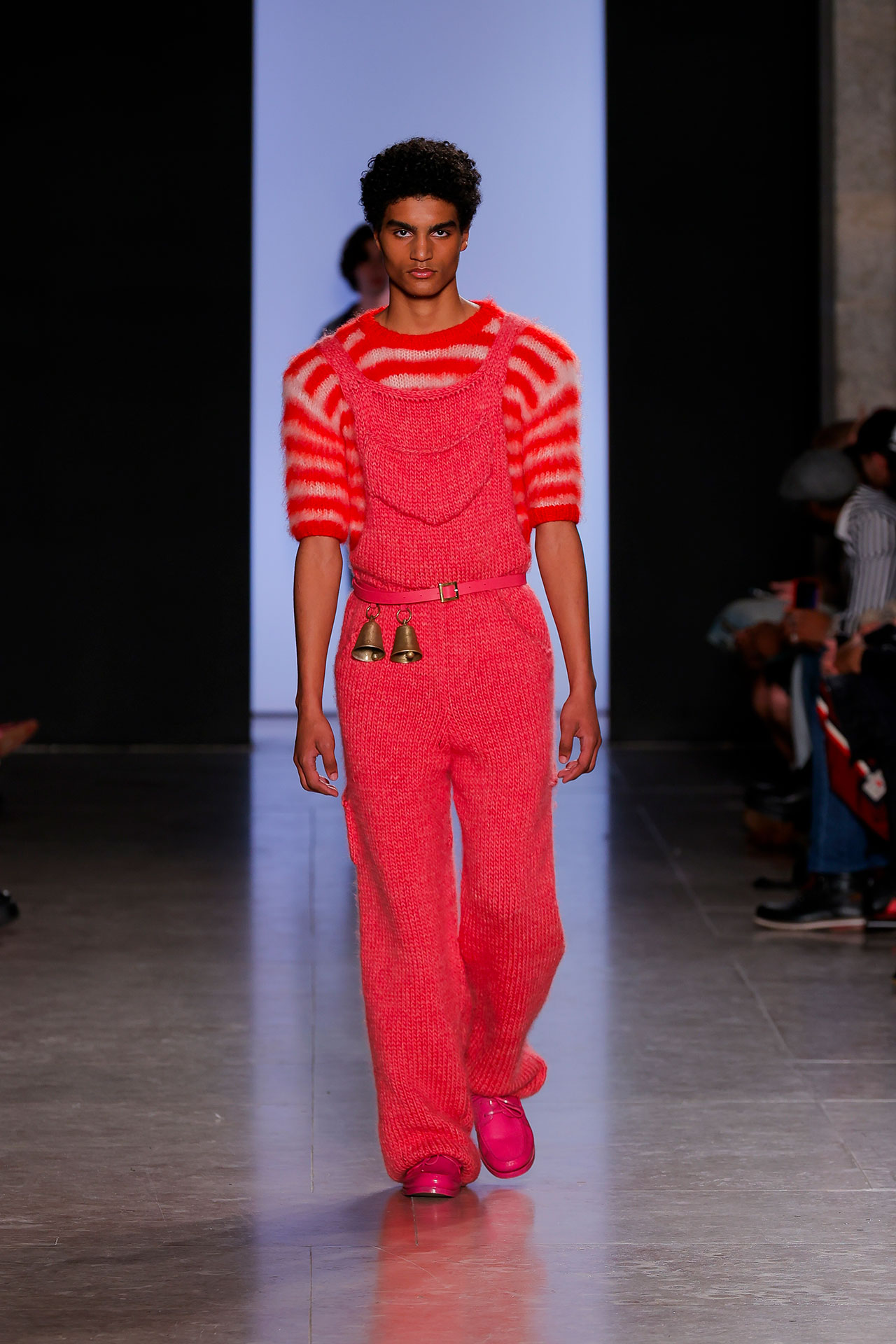

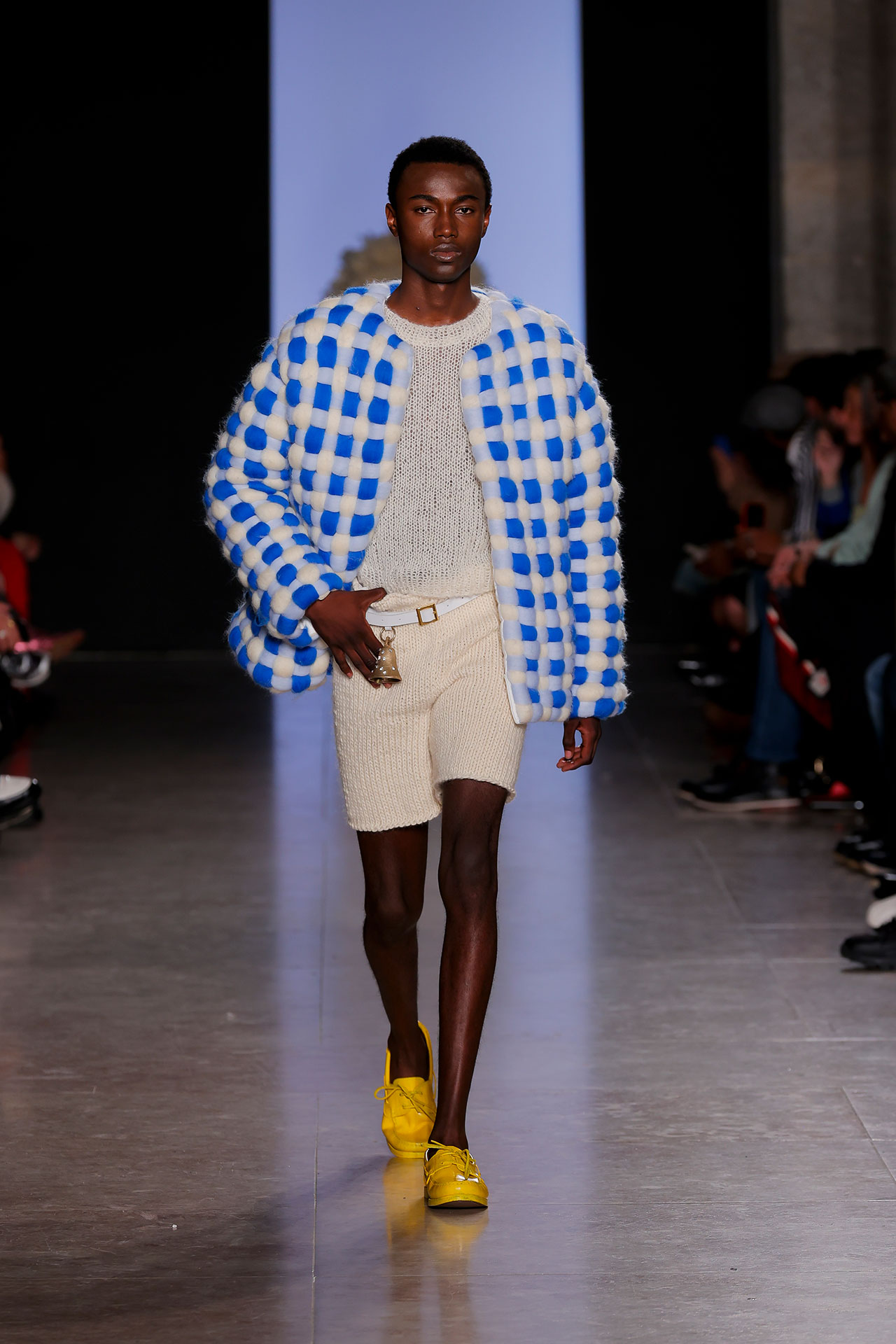
All Backstage Photos – Luís Gala
All Runway Photos – Ugo Camera
MOLMN by MATILDE MARIANO
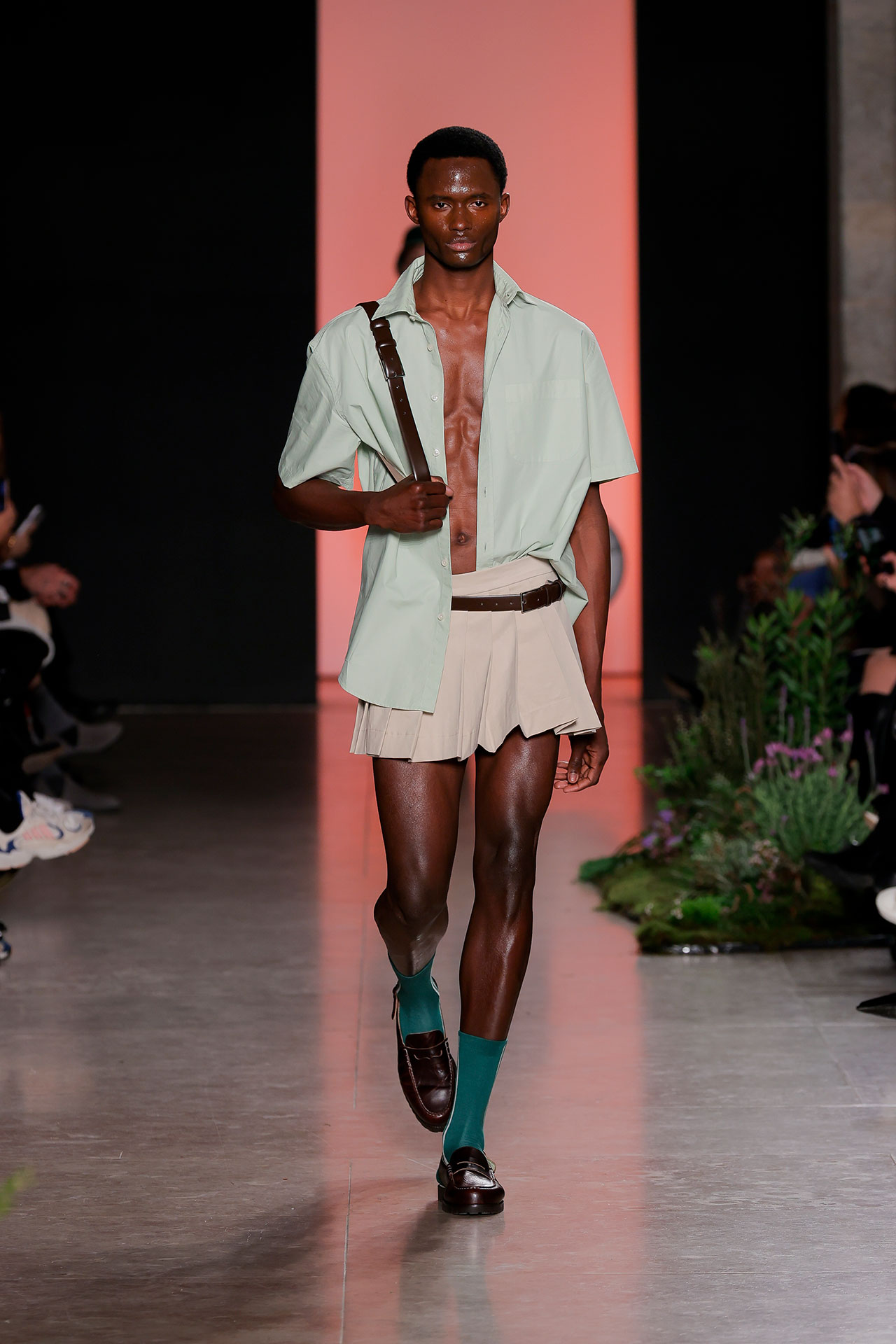
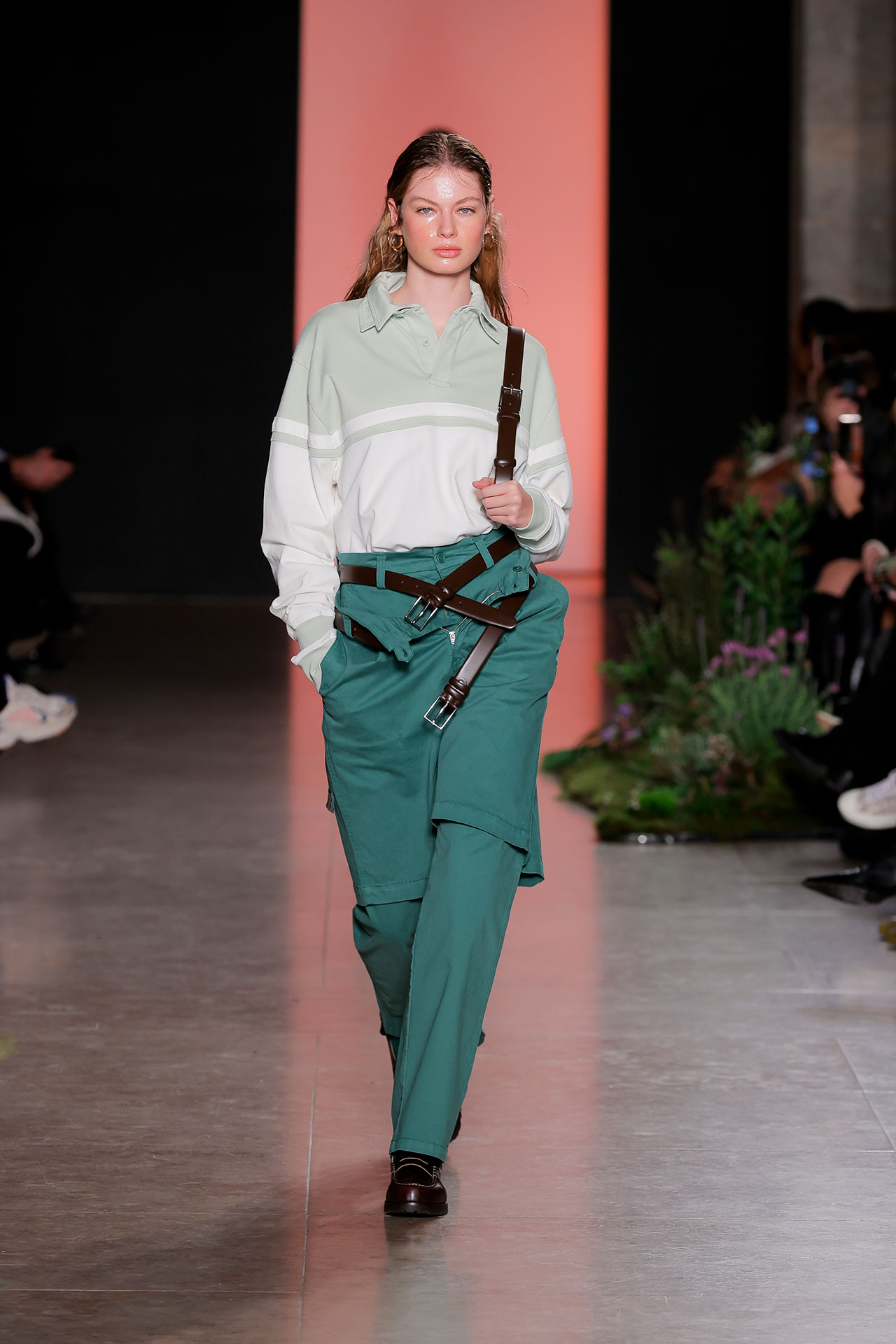
Working between Lisbon and Los Angeles, Portuguese designer and architecture graduate Matilde Mariano is part of the first wave of young European fashion creatives working significantly with AI to collaborate with major brands in the US.
In 2023, after MOLMN came second in the inaugural edition of AI Fashion Week, Mariano partnered with the global retailer Revolve to produce a collection in LA based on a mix of traditional handcraft and AI image-making.
At Lisbon Fashion Week, she extended those techniques further in a golf-inspired collaboration with the Portuguese brand Decenio. “The main AI softwares I use are Stable Diffusion and MidJourney. Then I use all the Adobe Suite programs: Illustrator, Photoshop, Premier Pro,” she said.
“It’s exciting to combine handcraft with machine design. LA is a very artistic town where we really lived this process, working closely with pattern makers and designers at Revolve, and sourcing everything locally. It was an amazing challenge to transform a 2D image into a whole 3D piece. Soon, with Sora and other tools coming out, this will change again.”
“I keep up to date through Reddit forums, newsletters, websites and YouTube channels devoted to AI and new technology. I encourage other creatives to go hands-on: try to develop and follow something through until you achieve something you’re truly happy with. Play with it. It’s a tool and it was it made for us, not to intimate us.”
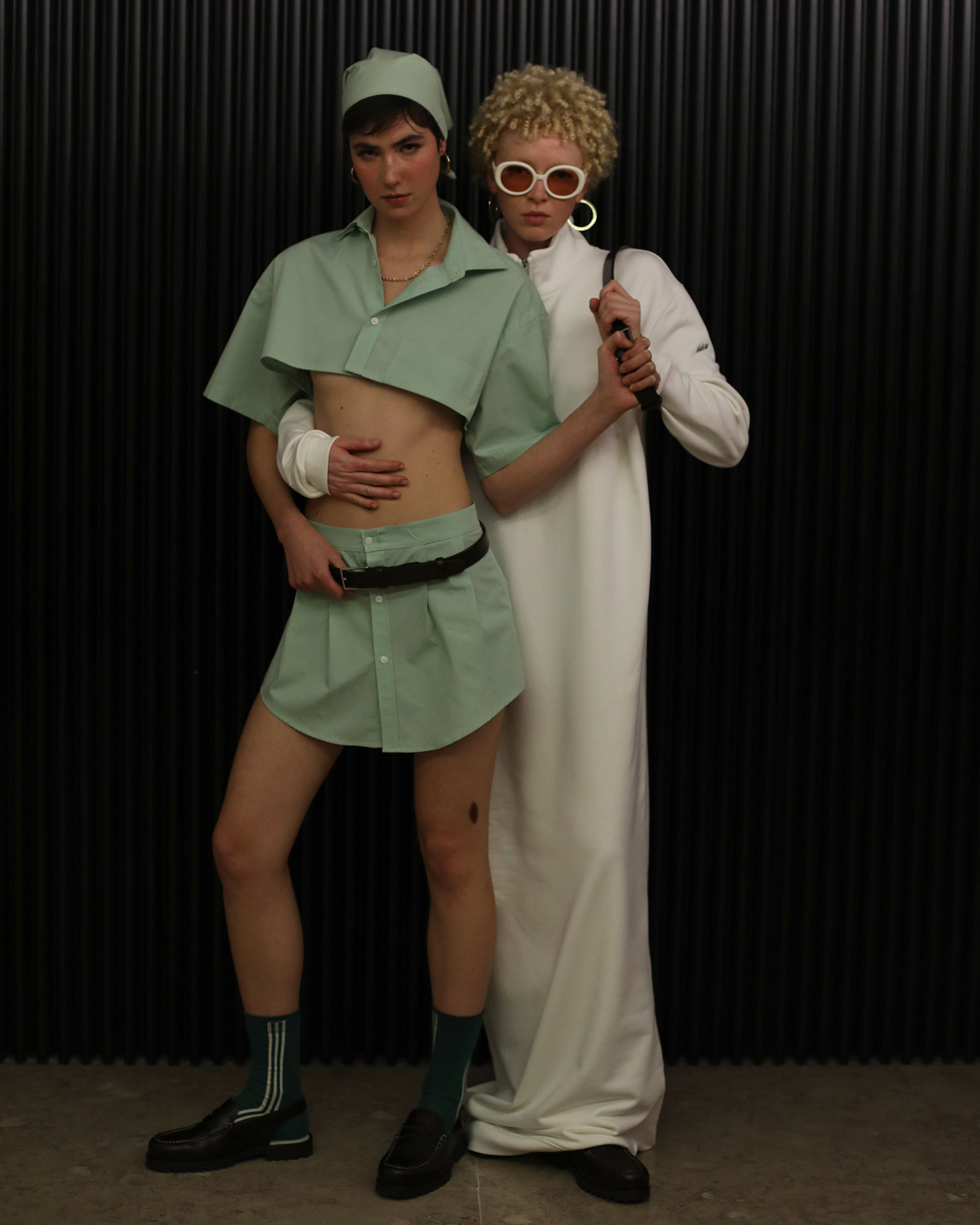
ISZA x IED
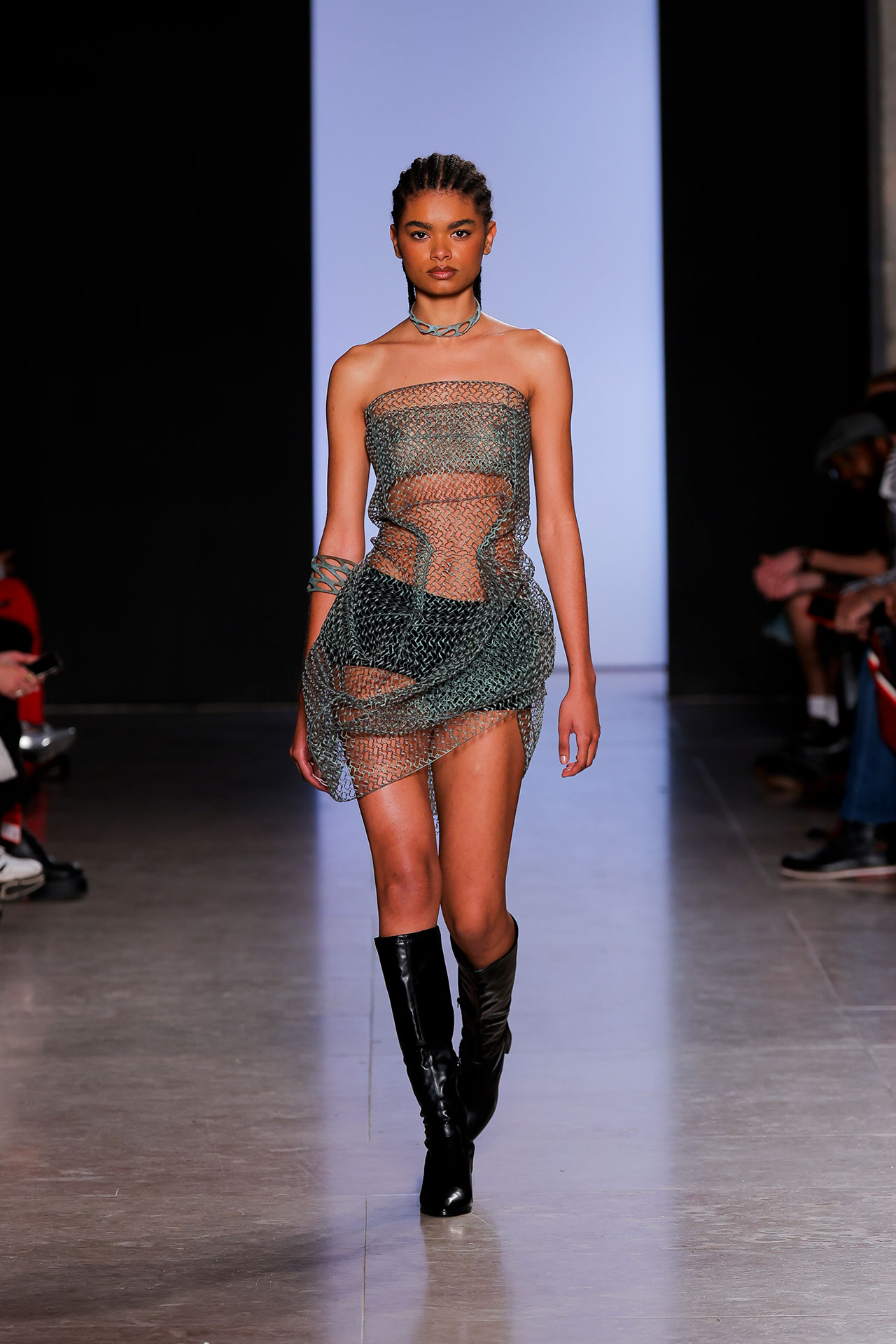
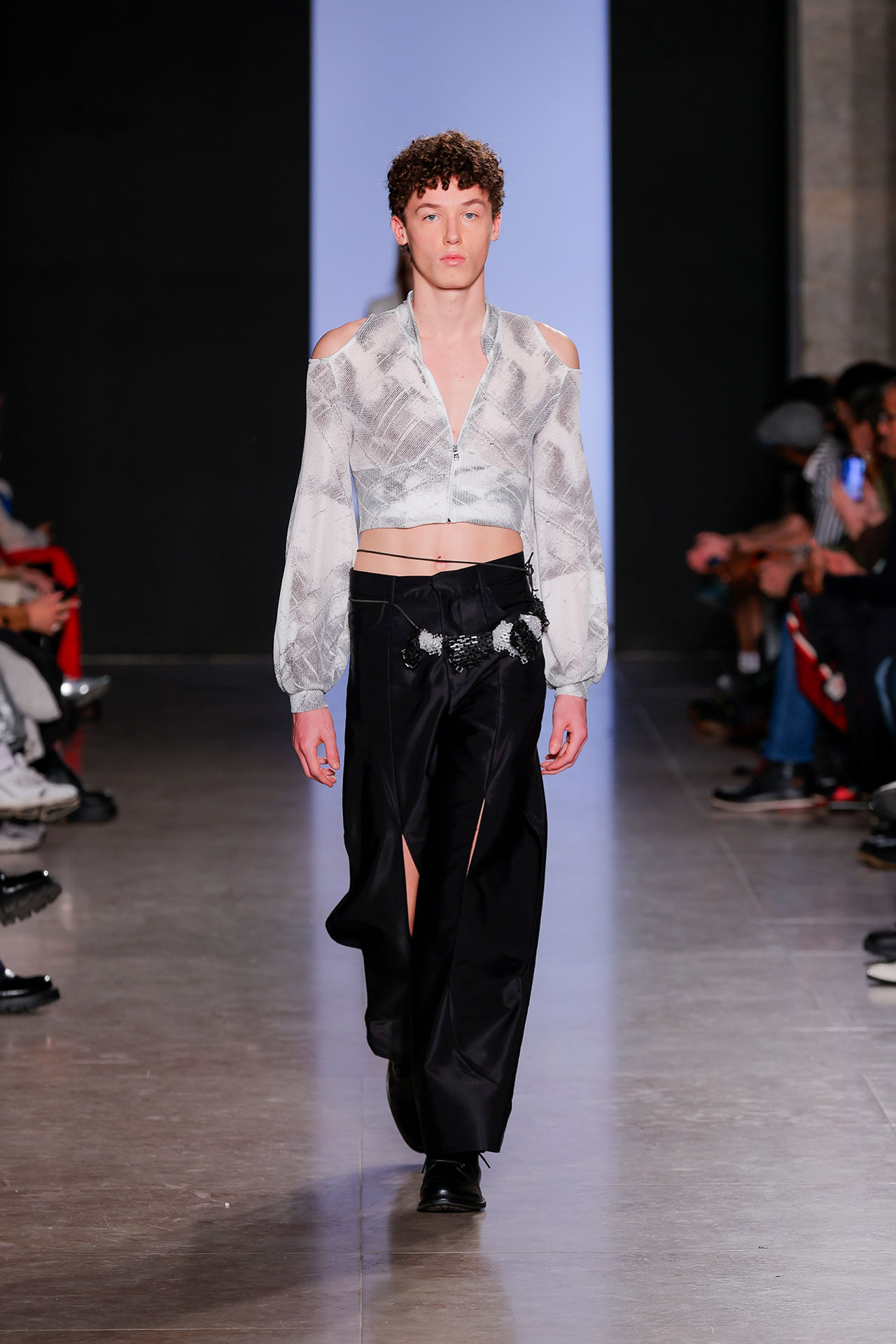
Newly graduated from the Fashion Design course at Modatex in Porto, Ana Luisa Marinho the designer behind Isza presented a heavily tech-inspired FW24/25 collection based on the ‘discomfort of not knowing’.
“I have a deep interest in what technology can bring us. But I also feel doubt about whether a super technological world is going to be the best world. Will it be utopic, dystopic? I don’t know. I take inspiration from that question and try to explore those doubts in myself and the world,” she said.
Marinho’s collection won her the Istituto Europeo di Design (IED) award at Sangue Novo for a fashion scholarship in Milan, presented by head of the IED fashion school Olivia Spinelli.
“I chose Isza because I think she spent a lot of energy on studying new materials, and this is how to make change in the fashion world. It’s important to start from the material,” said Spinelli. “I worked with important designers, but it was the 90s – it’s in the past. The fashion world now is completely changed. The digital connection has become so important.”
“If you build your digital presence, you have the possibility to be in contact with other colleagues, designers and creatives in the world. But you need to create important relationships online that are about more than just likes. You need to communicate something unique, have an identity, a story to tell. And you must also cultivate a human relationship. They have to coexist.”
At IED, Spinelli and her colleagues are working on a digital manifesto to guide young designers in making the most of AI tools. “Technology can help everybody to use garments in a different way. You must push your creativity to solve a problem. Responding to problems, not just to aesthetics – this is design,” she said.
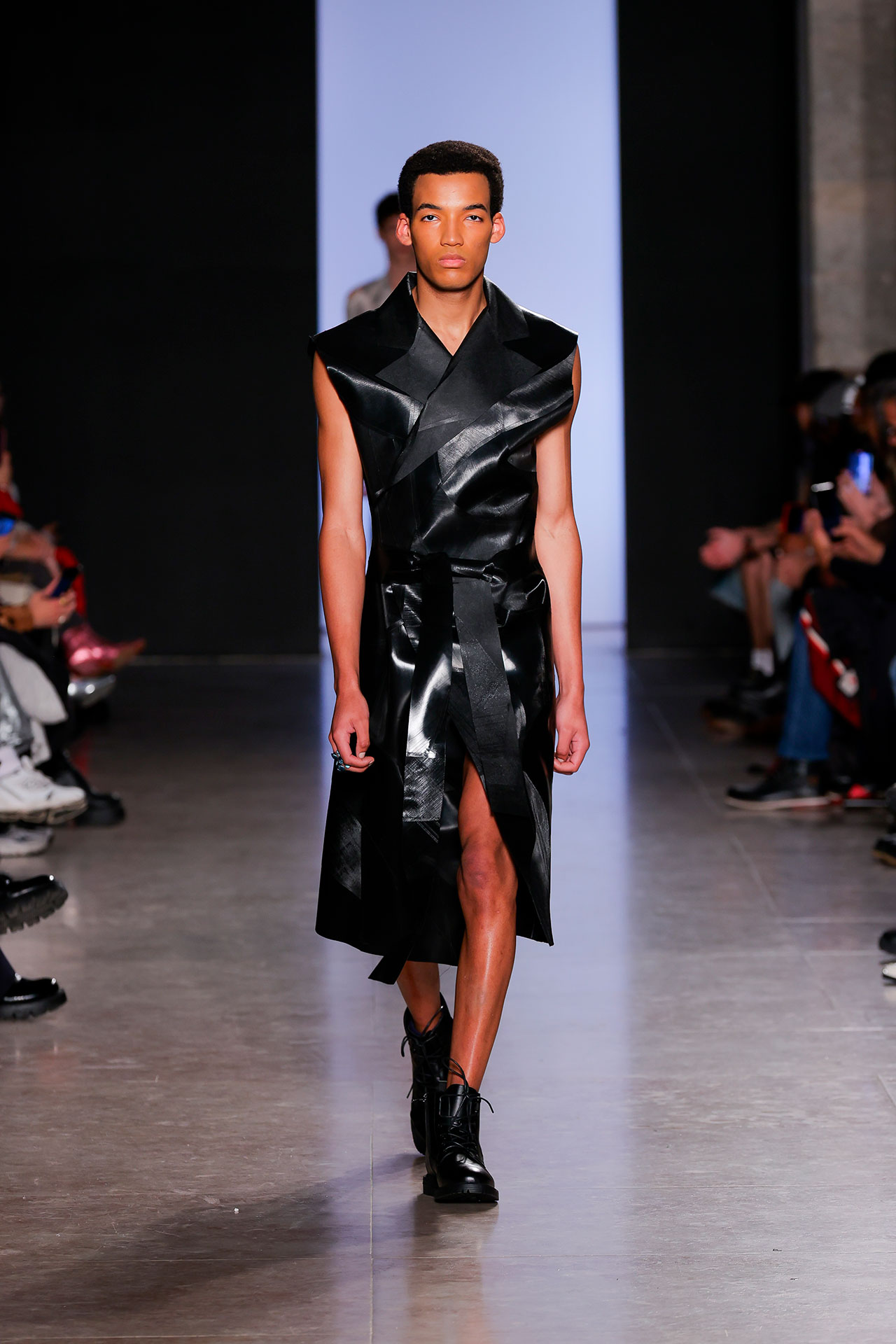
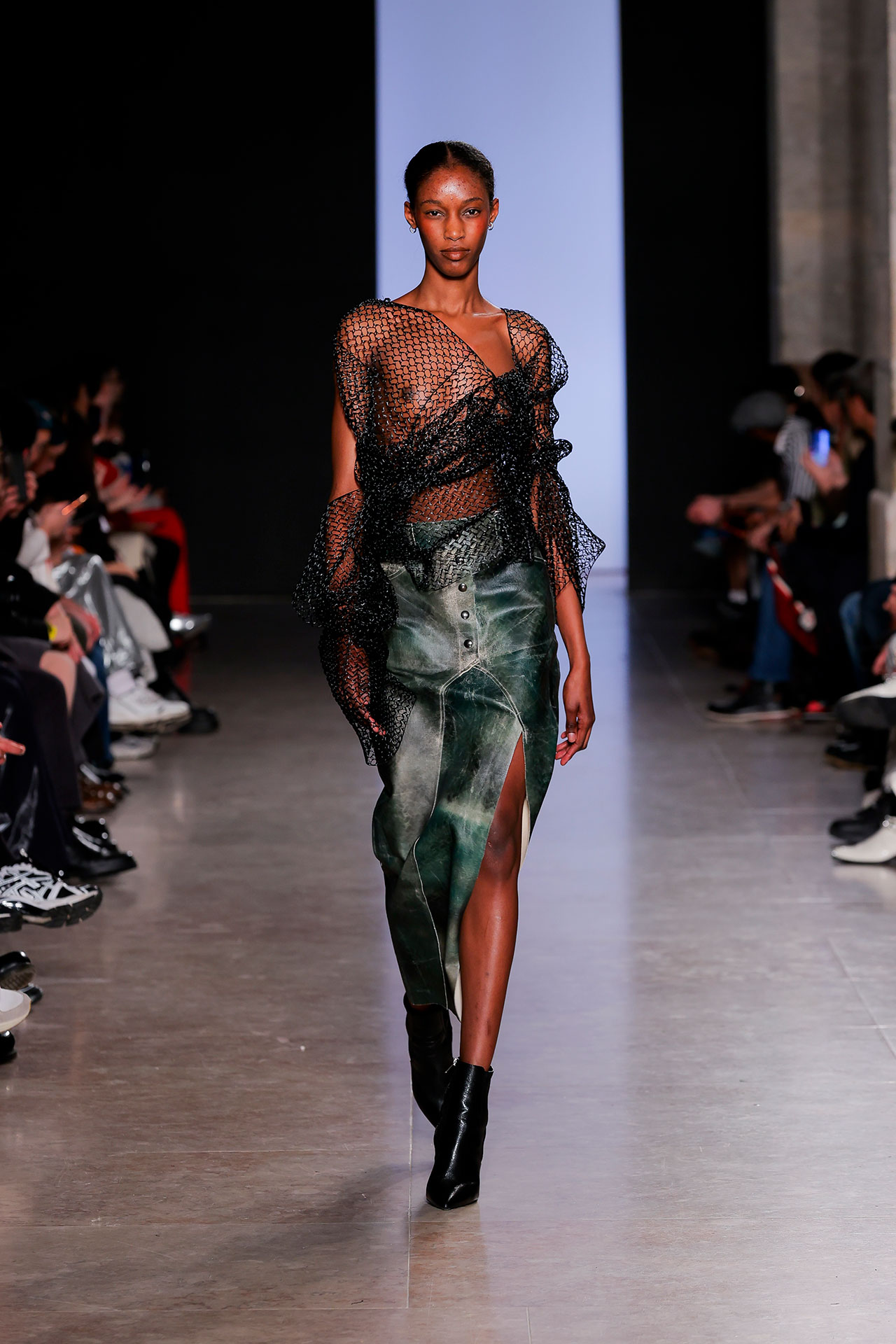
BÁRBARA ATANÁSIO x RDD TEXTILES
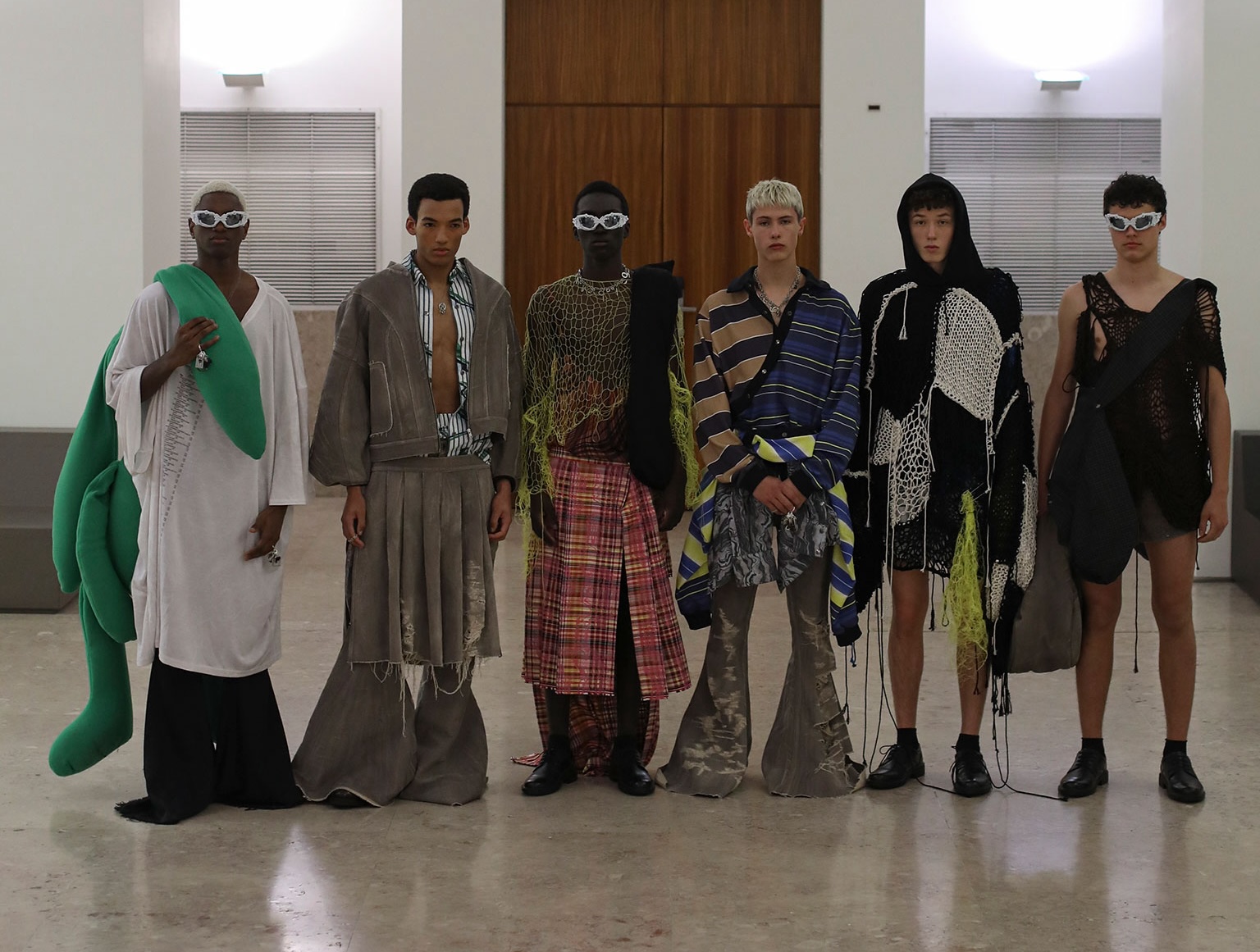
Textiles and Fashion Design graduate Bárbara Atanásio debuted at this year’s Sangue Novo after interning with the breakout Portuguese designer Marques’Almeida, and becoming a regular at the Mercado P’la Arte design market. Her collection, based on upcycling and deconstruction, clashed the worlds of sweet memory and hard reality via ragged seams, familiar but outsized cuts, and toy-inspired accessories.
Atanásio’s work saw her win the Sangue Novo Textiles award and a three-month internship at sustainable textiles company RDD, which develops next-gen biomaterials and processes like algae fabrics and natural dying methods that can substitute conventional approaches.
RDD’s CEO Ana Silva Tavares presented the award. Like Spinelli, she sees material innovation as the key to changing the fashion system. “Big successful brands are reluctant to switch to biomaterials. Their mindset is hard to change; you need legislation to make them respond. That’s why emerging designers are becoming so important – because they already have material innovation in mind.”
But if young designers want to be drivers of the industry revolution, she says they need better exposure to the world of material production.
“I see the same picture when I’m speaking with designers and brands and going to conferences all over the world: fashion designers are not educated, during their studies, on materials. If you don’t know what you are working with, you can’t make better choices,” she said. “I would say that all designers should pass through industry and production sites via an internship or work placement, to see what happens and how you produce material.”
“So partnerships between academia and industry are crucial, and we are seeing more examples of this,” she continues. “At ModaLisboa, for example, we sponsored Sangue Novo and selected Barbara to work with us for three months to create a collection with our materials.”
“This is important because people create with what they have. If they are talented, it will be amazing no matter what. So if we, at RDD, give talented designers only alternatives to conventional materials, they will make something amazing with what is available.”
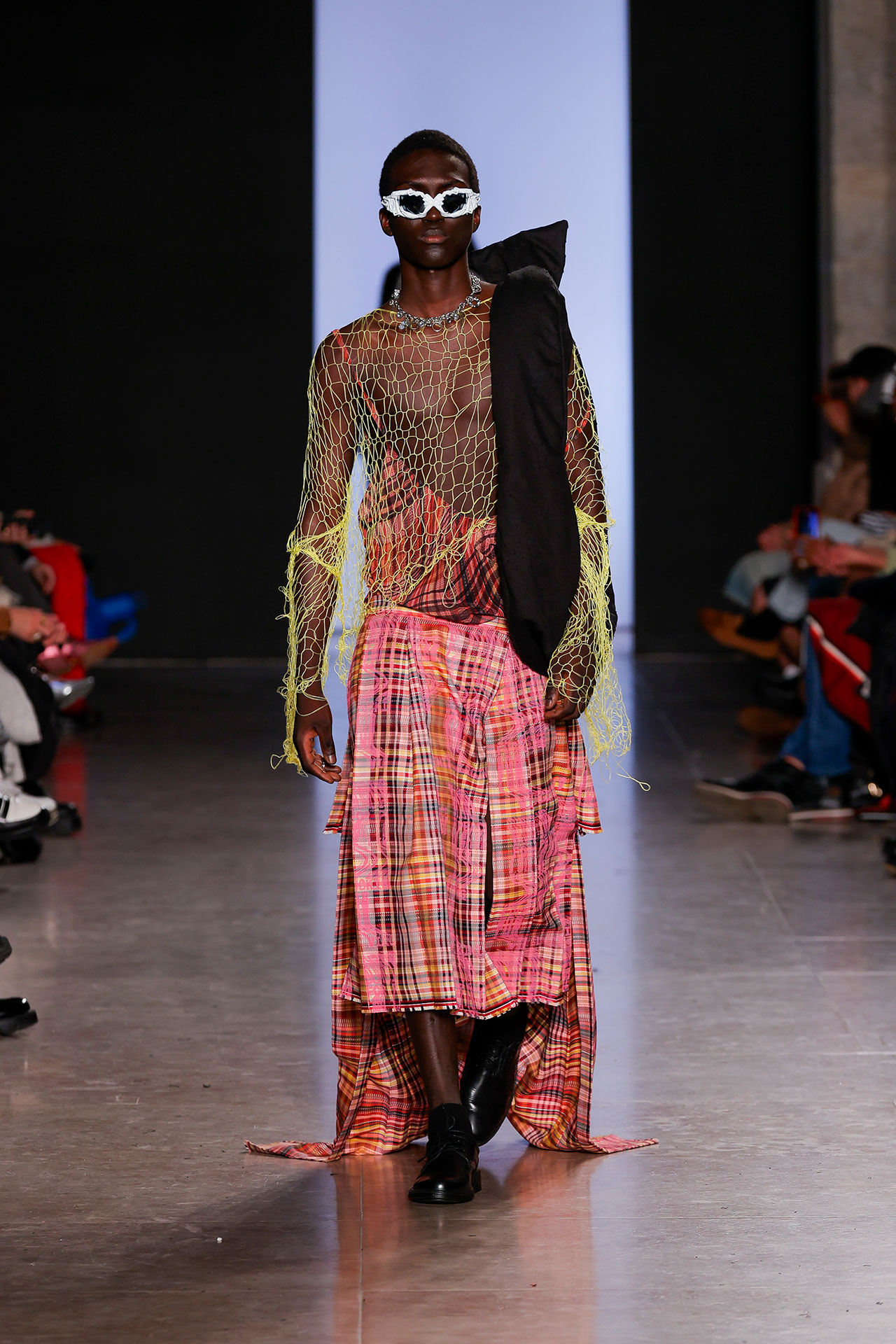
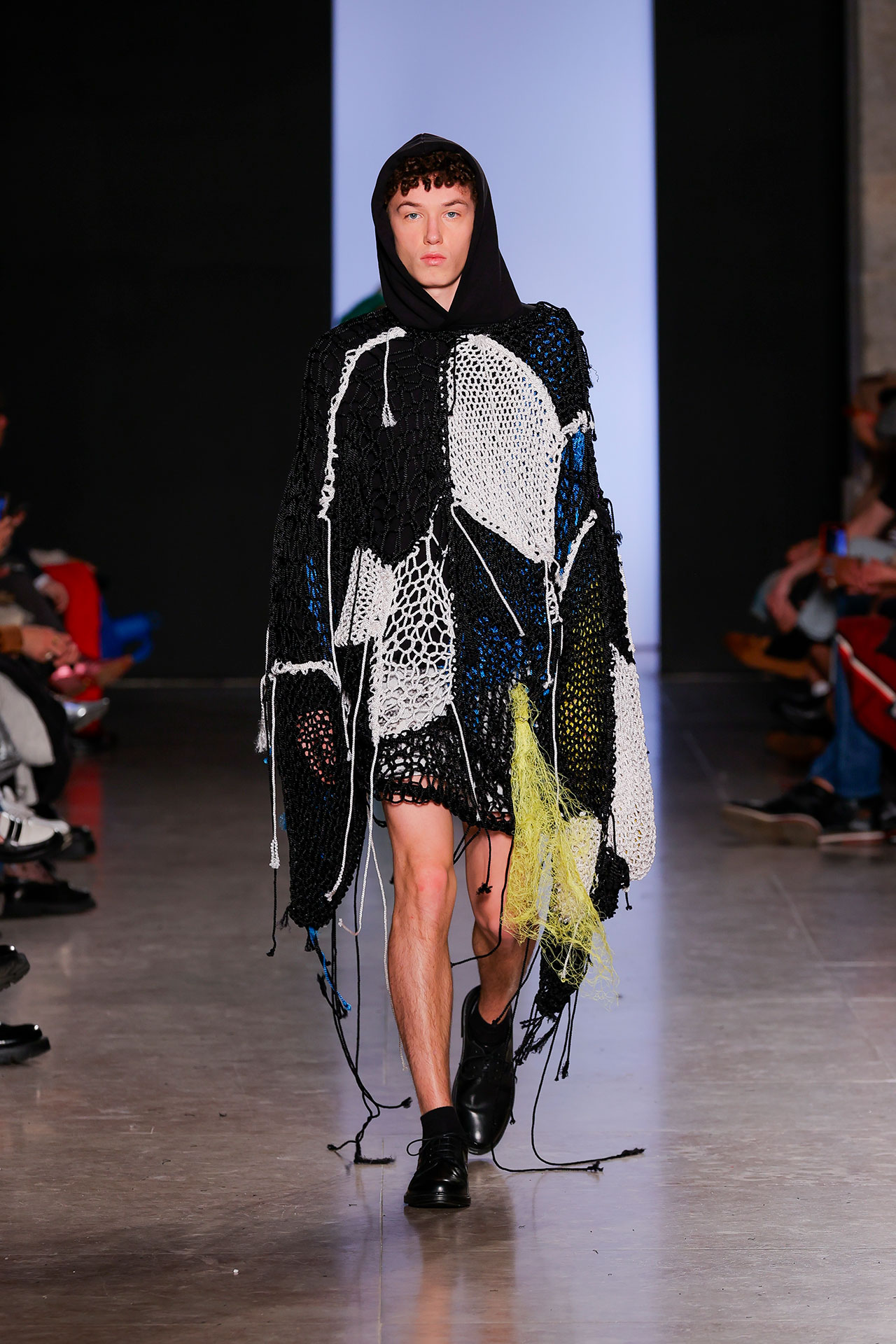
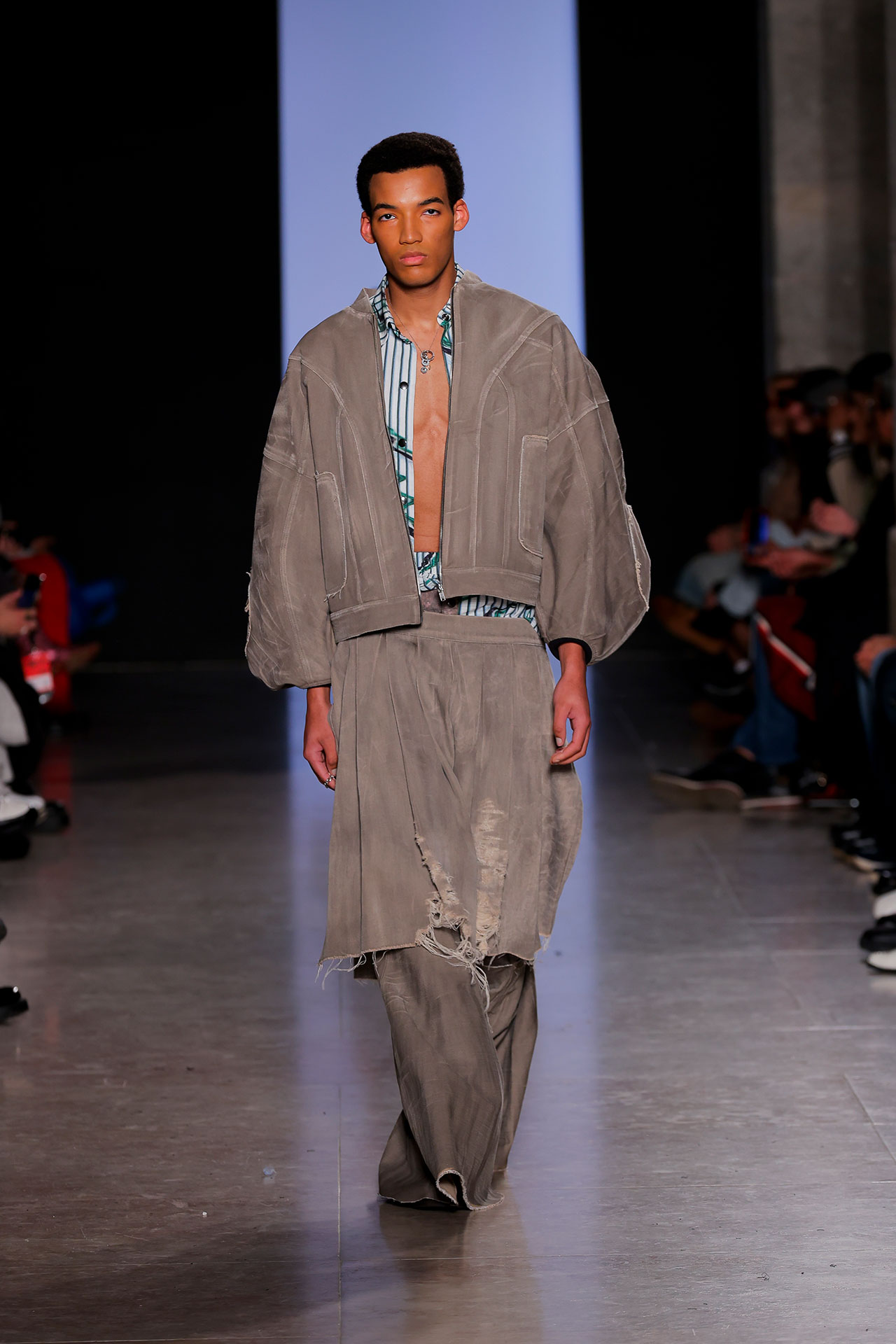
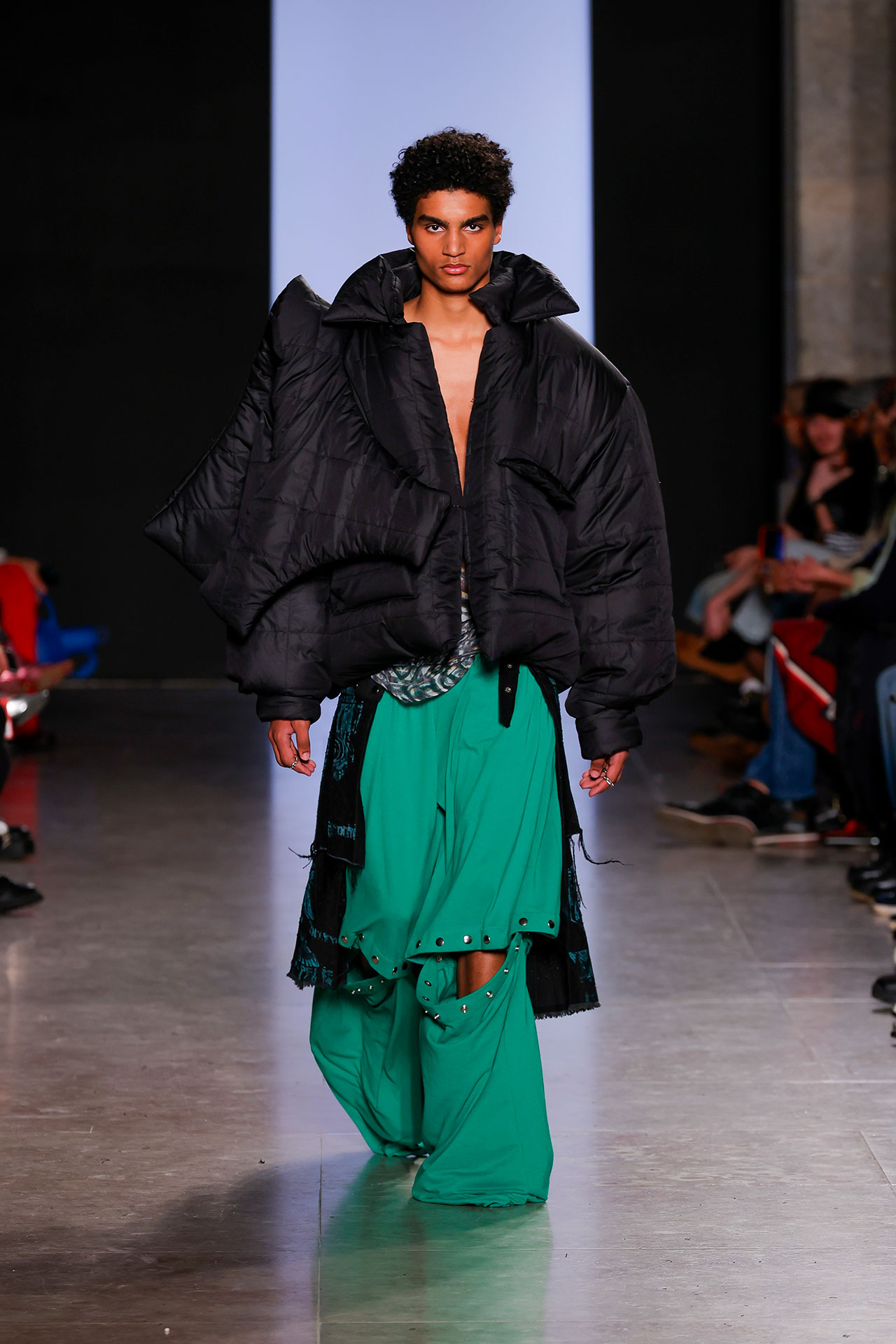
BÉHEN by Joana Duarte
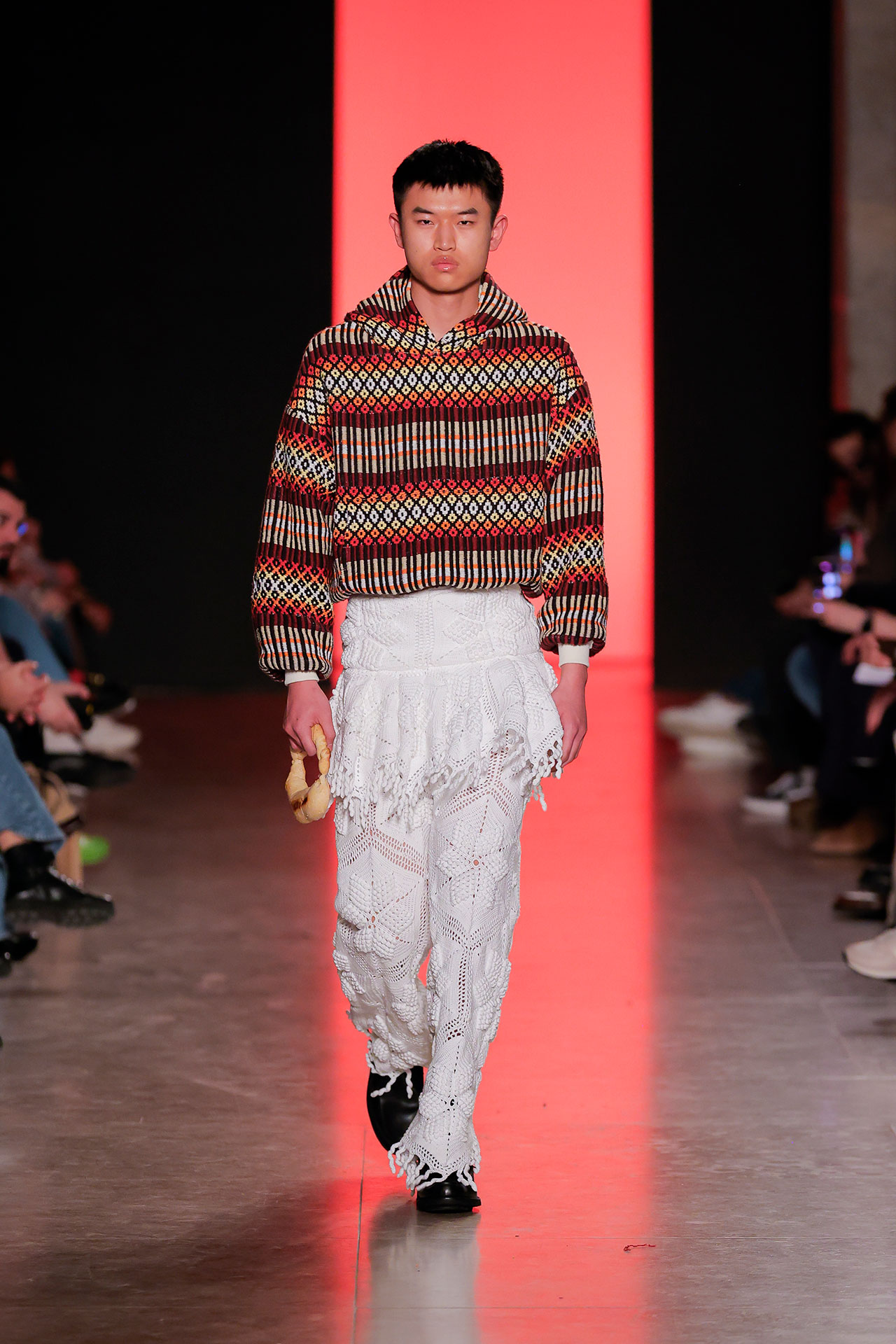
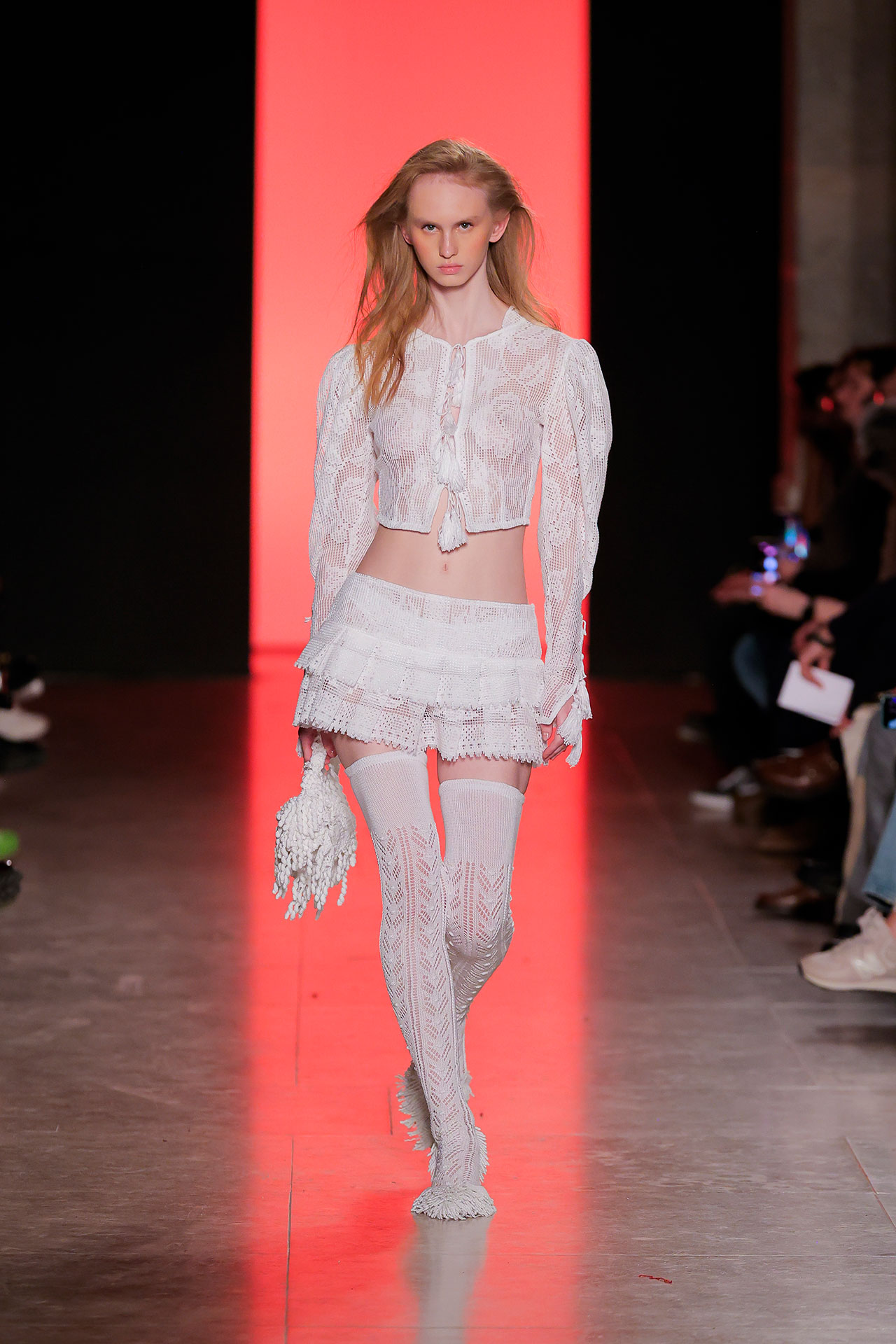
Joana Duarte’s label BÉHEN reworks heritage textiles and craft techniques to bring deeply researched histories into subculture fashion. Her new collection, I DON’T WANT YOU, is rooted in the embroidery of the Glória do Ribatejo region and takes its name from a message – stitched into an antique talego (a type of small bread bag) – that she unearthed at an archaeology museum archive.
“Imagine all the time it took someone to finely embroider this message, just to say: ‘I don’t want you’. The magic of embroidery for me is in all that storytelling and culture,” she explained.
Duarte’s designs are realised by local women artisans with whom she cultivates close relationships. “The mission of BÉHEN is to protect these techniques by making them wearable for a new generation. To do that, I have to know the community and the limitations of the techniques.”
And taking the talego reference all the way, the hooped bags and earrings on the unway were made of real bread. “There’s a connection between women, embroidery and bread. Bread is also handcraft; it can be ritualistic; it takes patience; it’s part of almost every culture. I wanted to nod to all that.”
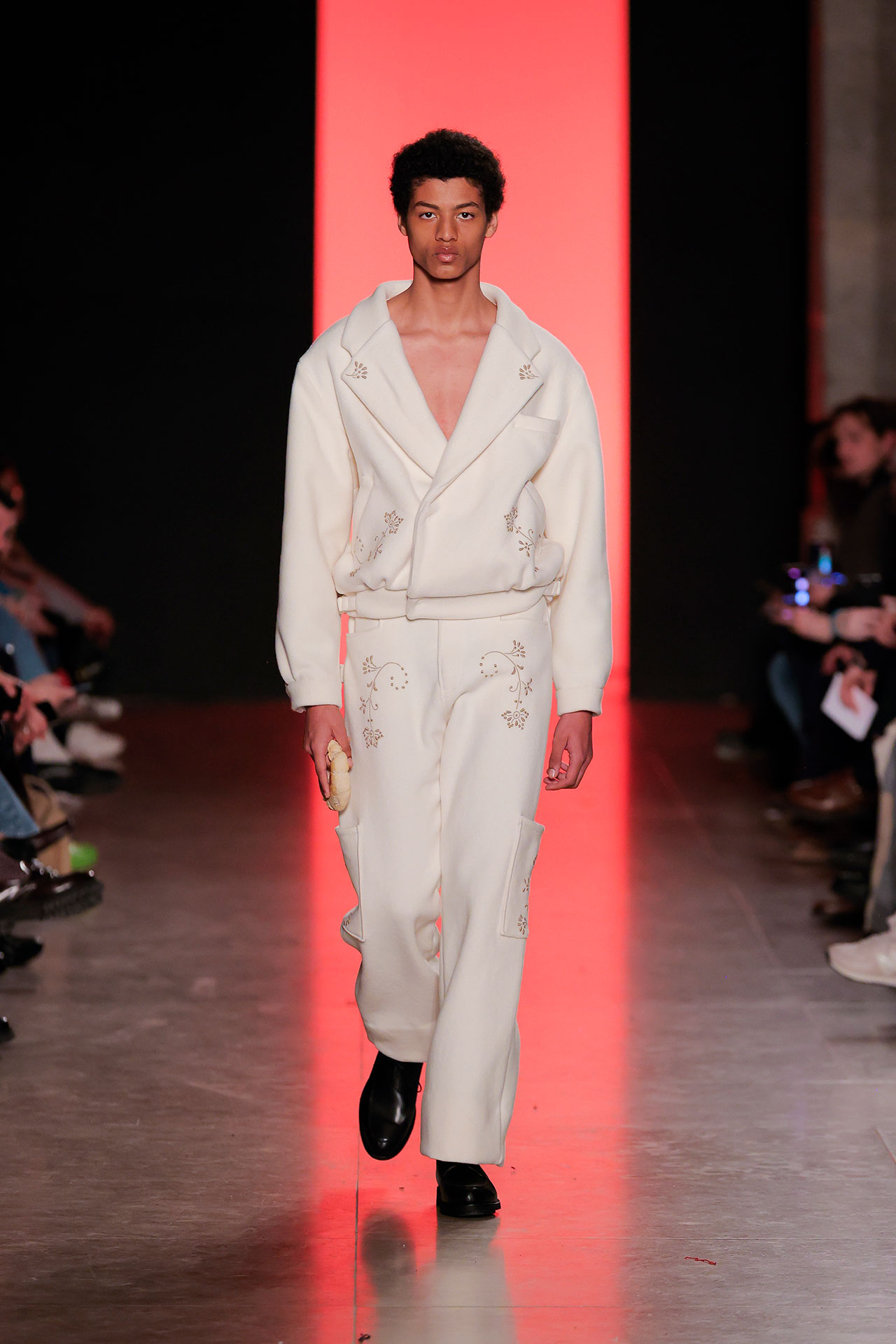
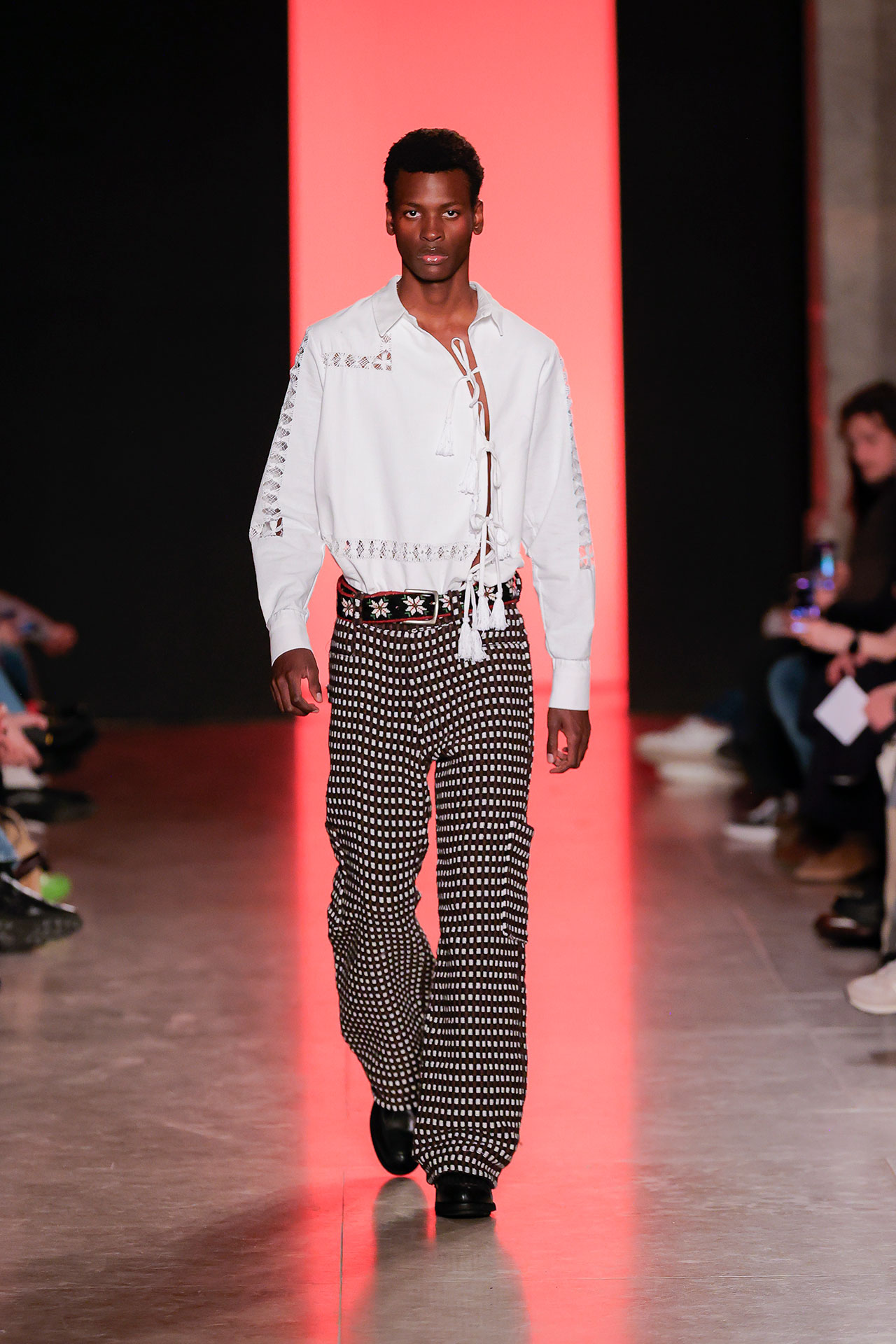
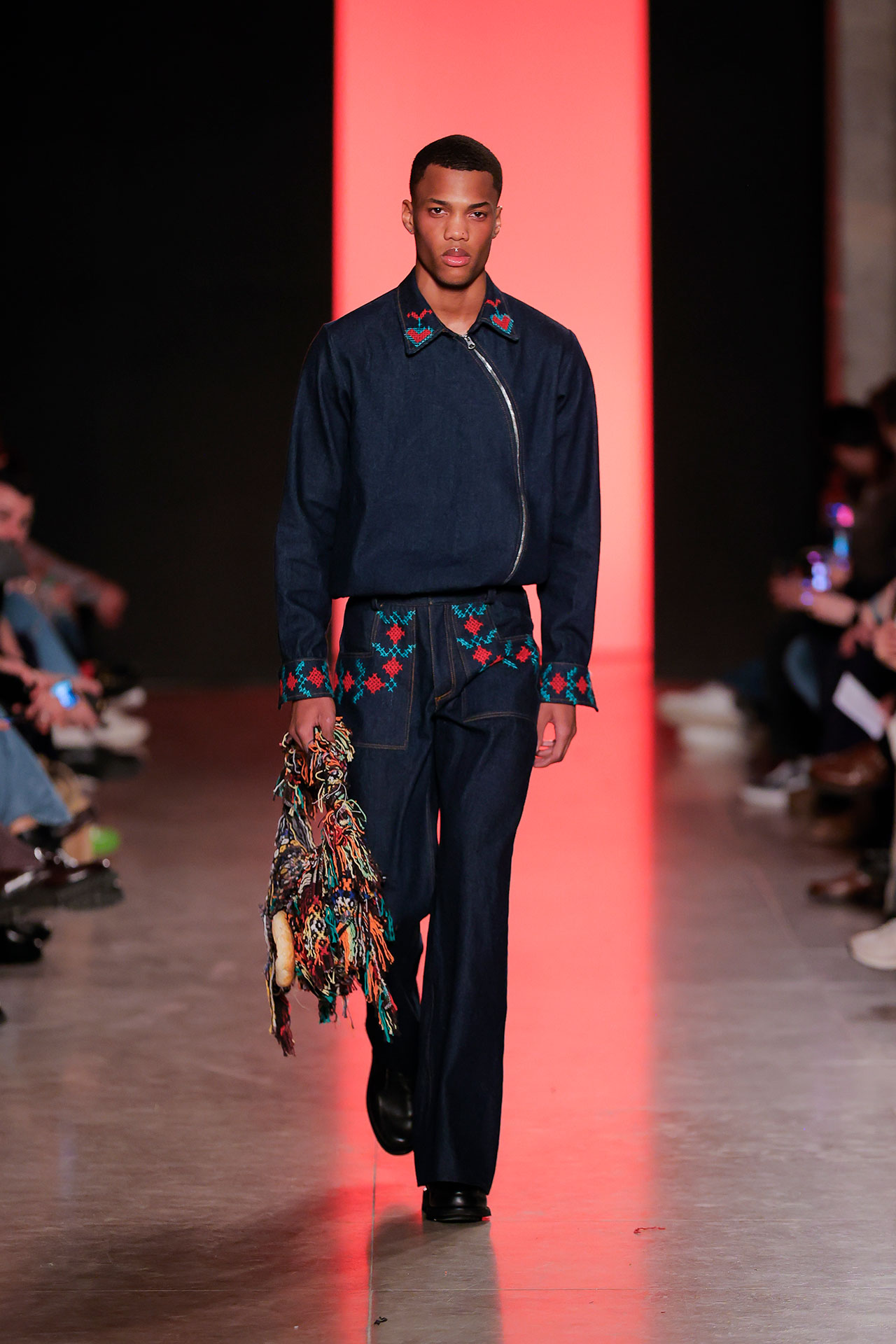
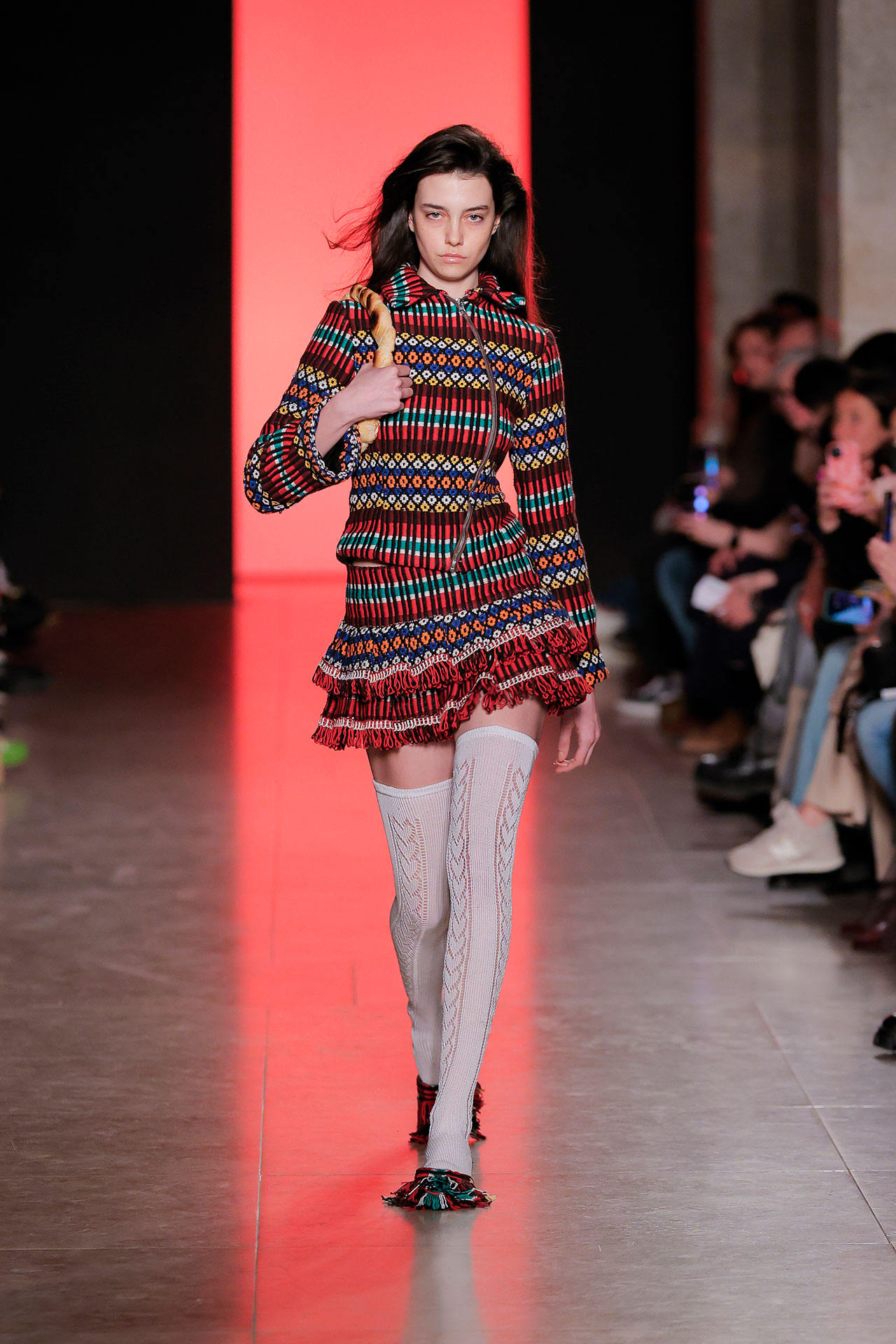
IVAN HUNGA GARCIA
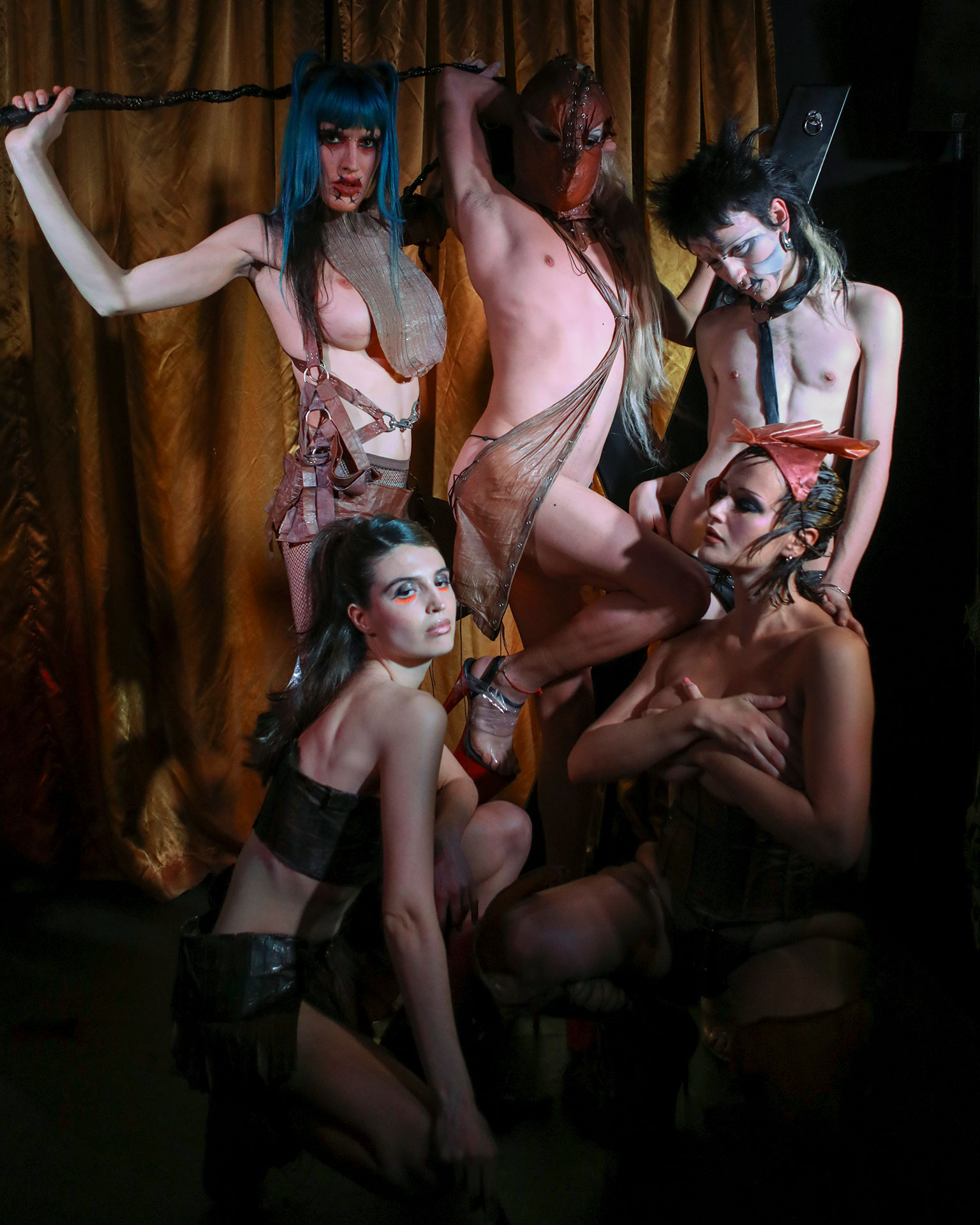
No creative at Lisbon Fashion Week embodies the crossover of material innovation and fashion design better than Ivan Hunga Garcia. Their ongoing ‘Botanical Apparel’ project, where living garments are made in a plant-lab studio from dried kombucha SCOBYs (symbiotic cultures of bacteria and yeast), is now in its second year, having debuted at Sangue Novo in 2022.
This edition, Garcia presented a BDSM-inspired midnight showcase called DWTV (Dominance Weeps Entangled Submission), in a back room of the Lisbon cocktail bar Pensão Amor.
“Since my SCOBY material is so similar to skin, latex and leather, and since my work is so performative, I thought that the BDSM experience would be a great starting point to associate body liberation and bio-regenerative design. It’s an empty space for vegan products – that are not plastic, of course,” they said.
“It’s enlightening to realise that you can define your own narrative independent of the perception of others. I would say that this collection is a mix of all the things that had been silenced for a while during COVID.”
Since last season, Garcia has assumed the full potential of their bio-philosophy: “I have decided to stop using fabric at all. I am investing in my own production of materials and if it isn’t made by me, I won’t use it.”
“ModaLisboa has embraced me a lot. I’m very free in my work and can define my own pace, my own field and fantasy,” they added. “I am free to investigate the multi-disciplinary potential of the self, and not to restrain myself to specific body of work.”
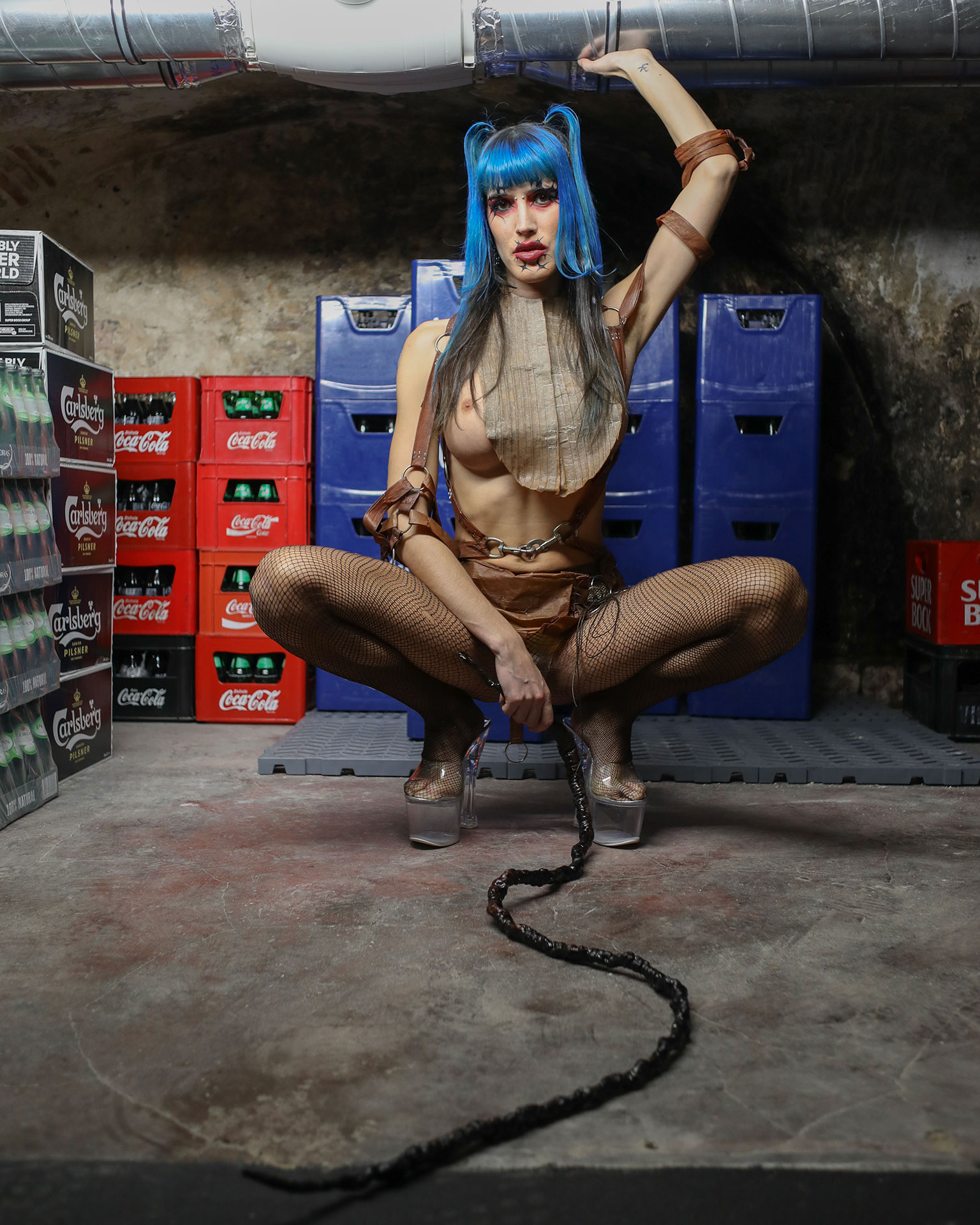
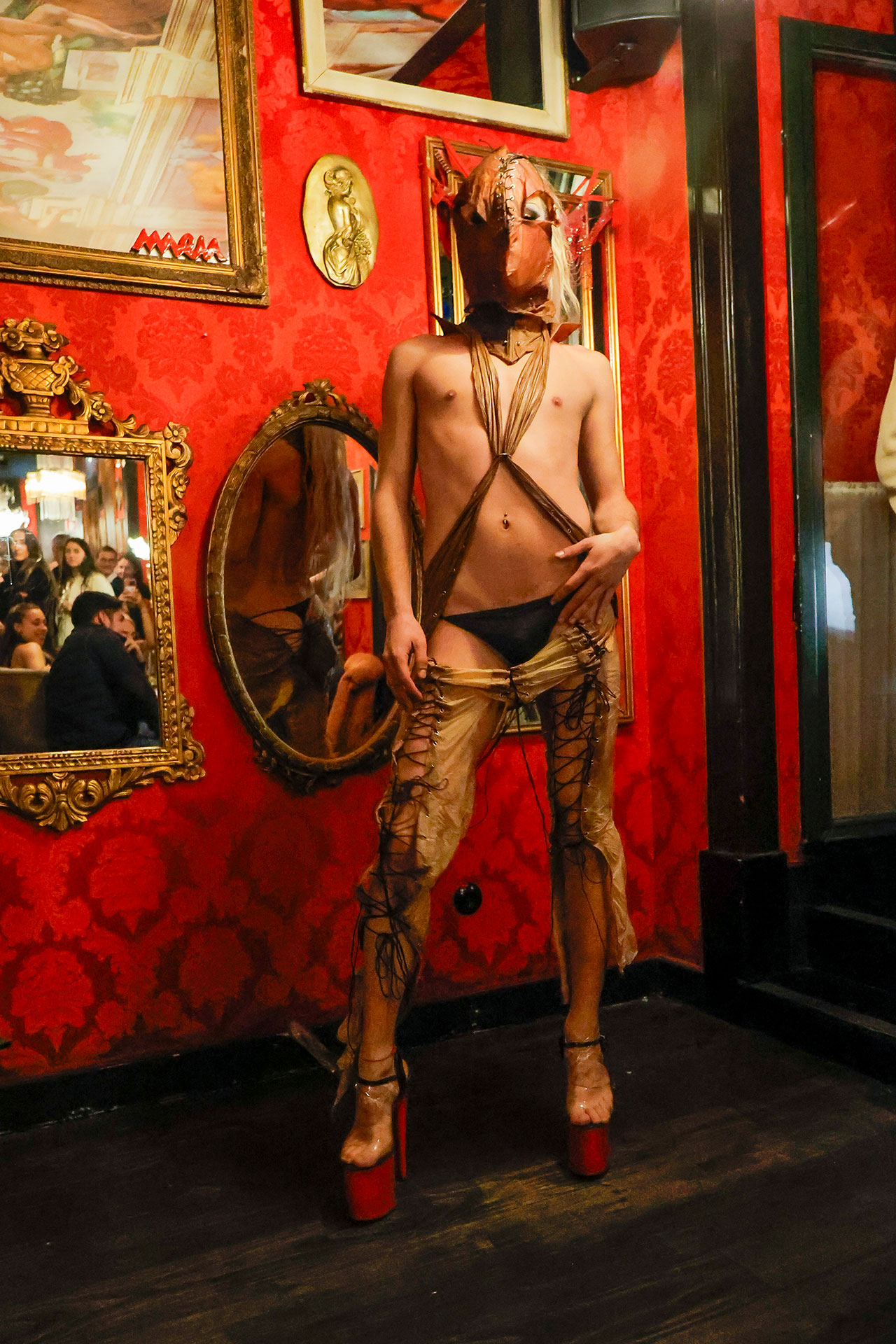
A REVOLUTION INSIDE A REVOLUTION
When you examine its DNA, it’s not surprising that ModaLisboa is so embracing of the experimental. It has always been rooted in revolution. The founder and director Eduarda Abbondanza, who also started Portugal’s first fashion school, describes how she planted the seed for Lisbon Fashion Week during the Portuguese coup in 1974.
“When the dictatorship fell, the country was very preoccupied, and the arts were very quiet. So we began gathering painters, photographers, writers, models, etcetera in Lisbon’s Bairro Alto neighbourhood and putting on events. Inside the revolution, we made another revolution. It was amazing.”
“Then before the first edition of ModaLisboa, I went to Paris Fashion Week to help set up a stage, to see the backstage and everything… because we didn’t know how to do it here,” she recalled.
Abbondanza still teaches fashion design at the public university, and still has an eye for innovators.
“When I have great creatives in fashion design, I see them immediately,” she said. “You need talent, energy and courage, yes – but great creatives also need culture. That’s where the questioning of identity comes from, and it’s not possible to work in fashion without it.”
Through the lens of all the radical art and politics she has witnessed, Abbondanza looks to the future with both excitement and intimidation.
“Like the European industrial revolution, and like the Portuguese revolution, we are in the middle of a revolution now – and that’s exciting. But sustainability is a sensitive topic because humans are never going to be completely sustainable. We need big industrial, political and legislative shifts. We need laws, otherwise people will not change.”
This conversation about radical change is very close to the surface at ModaLisboa. Reflecting on it all, IED’s Spinelli said: “Lisbon has a different point of view. It’s more experimental compared with other fashion weeks, where the pressure, business and brand investment distract from art and activism.”
“This is a small, pure, authentic reality.”
